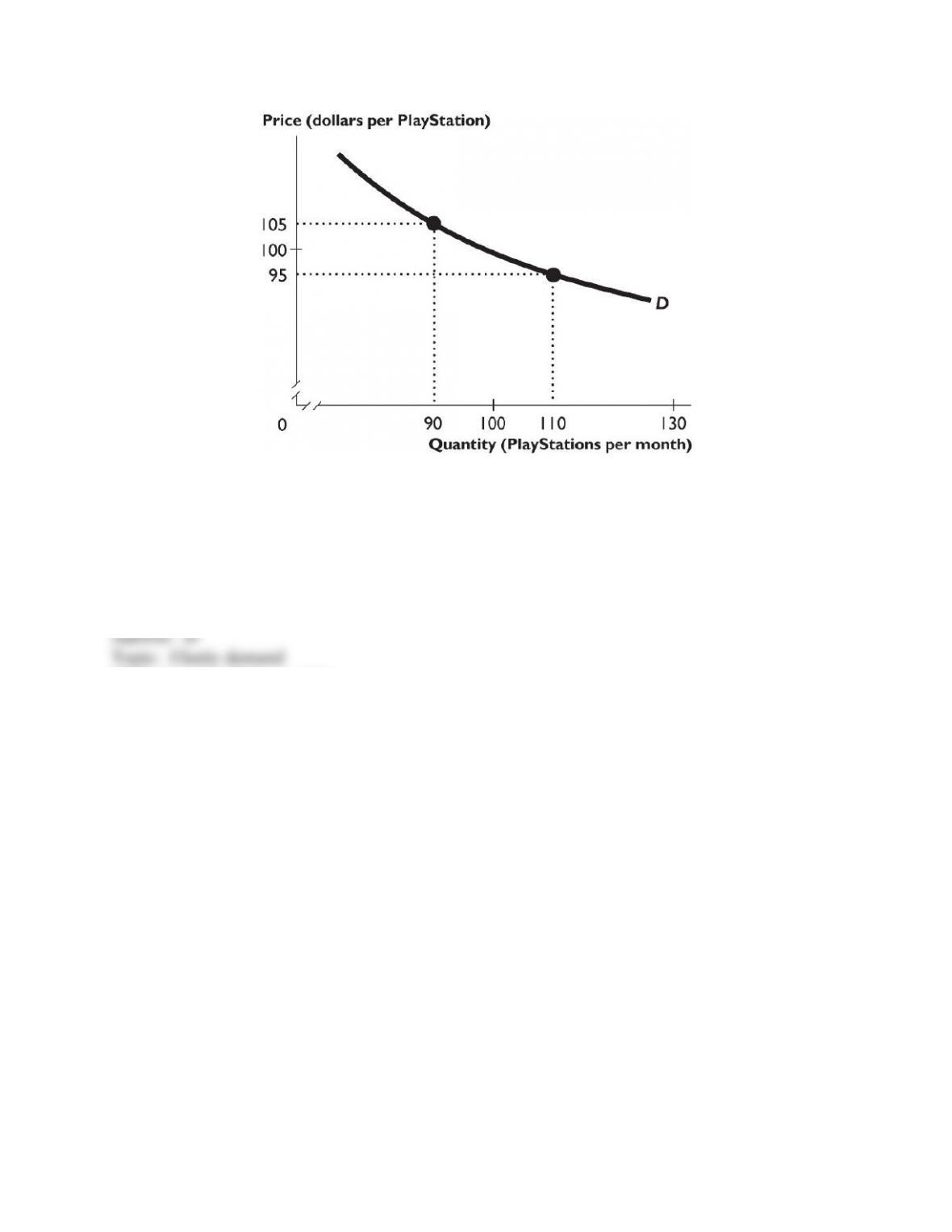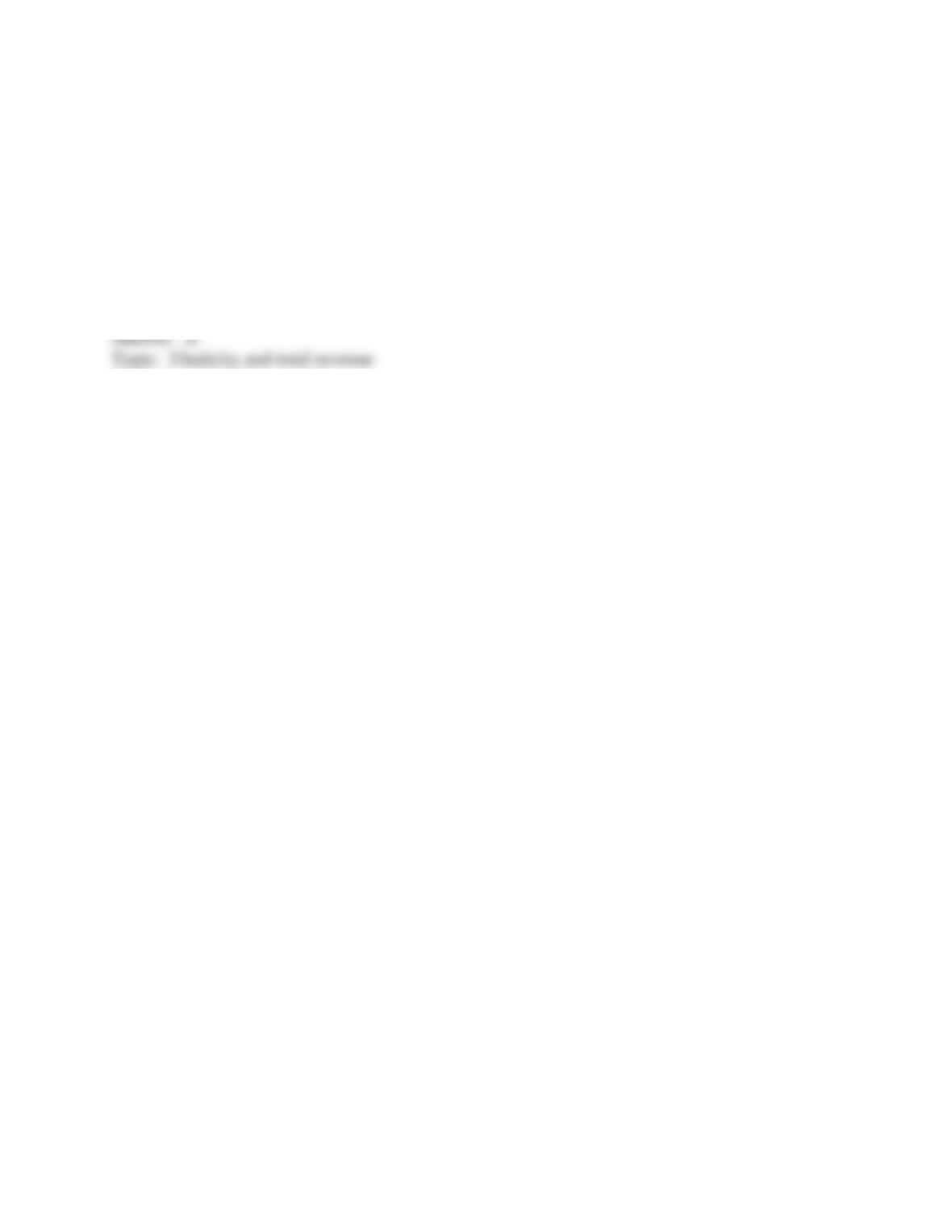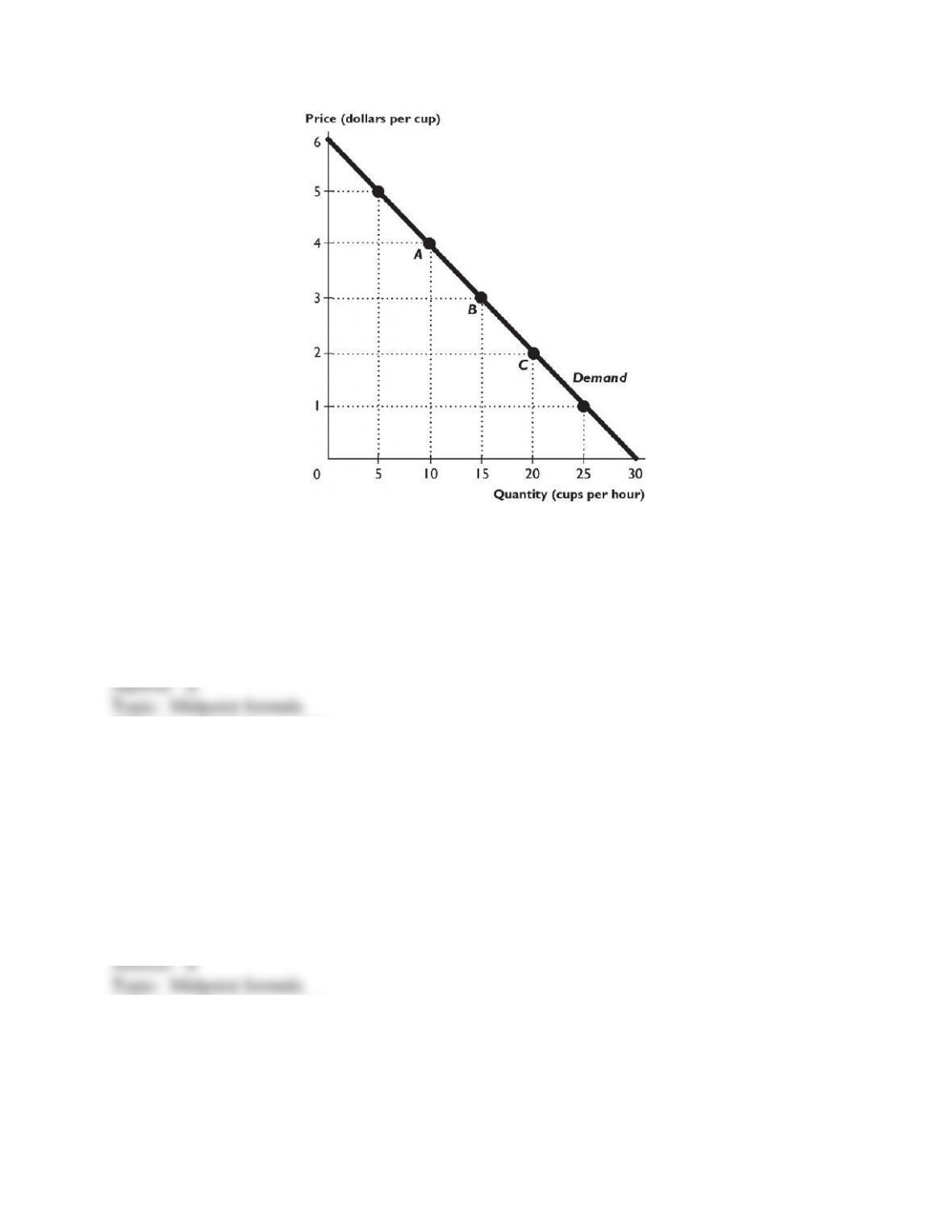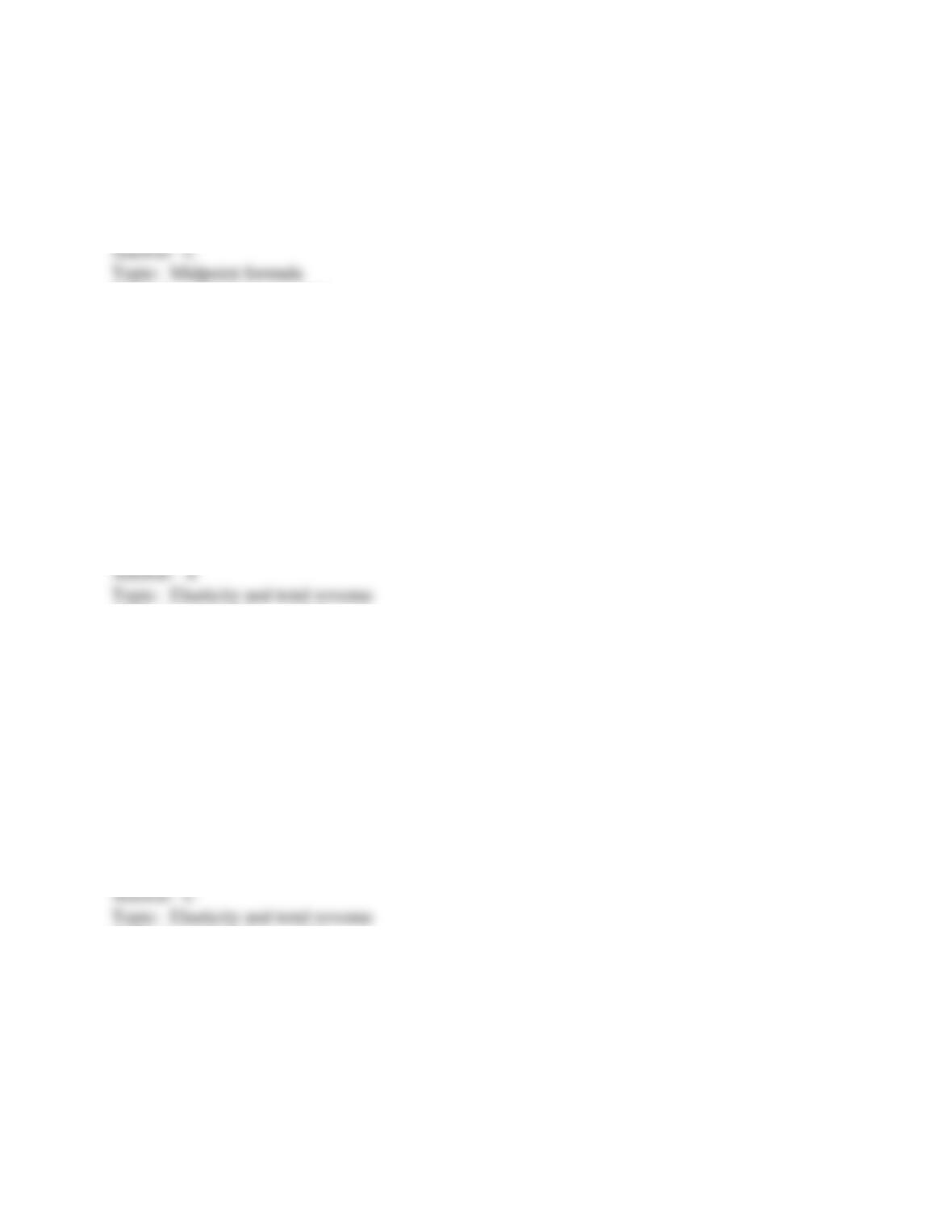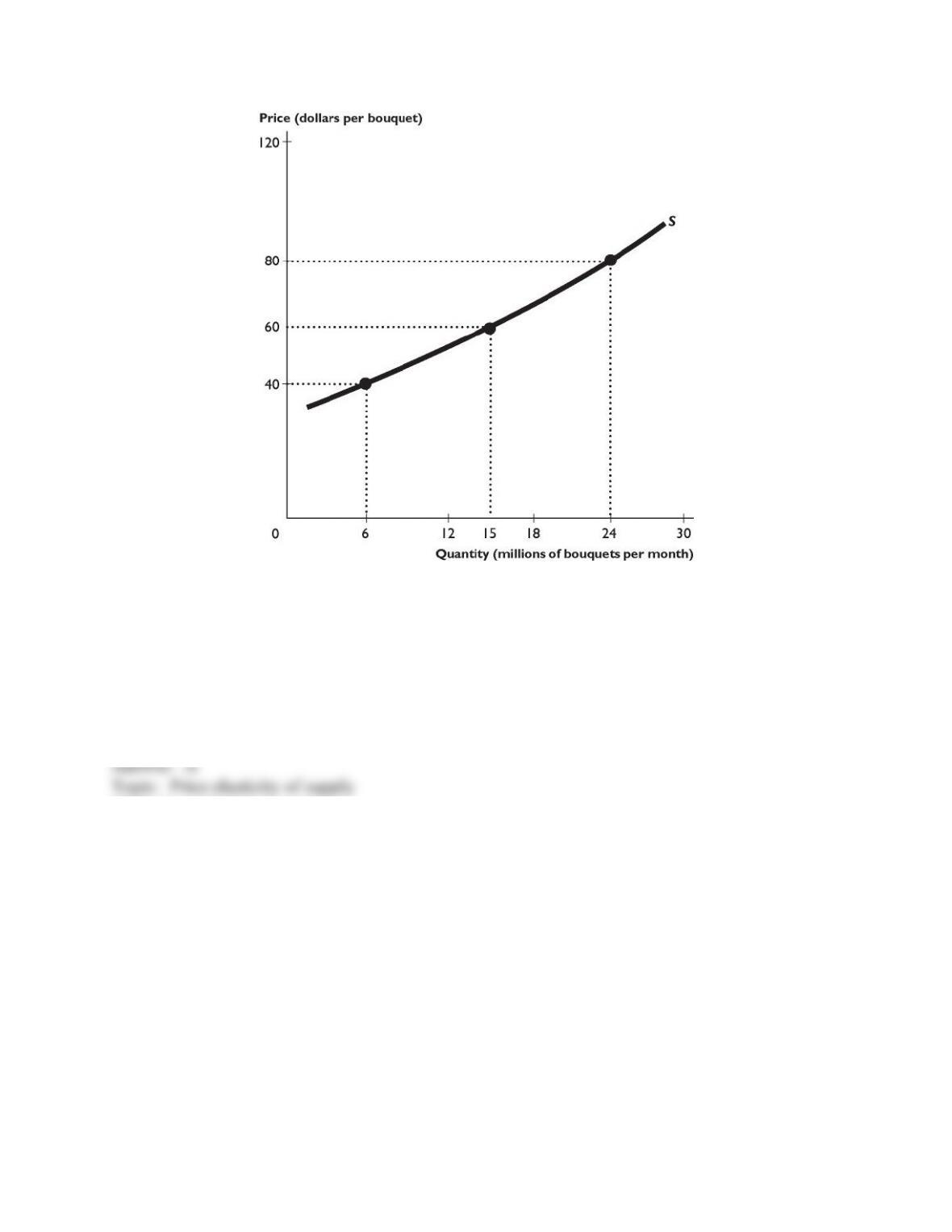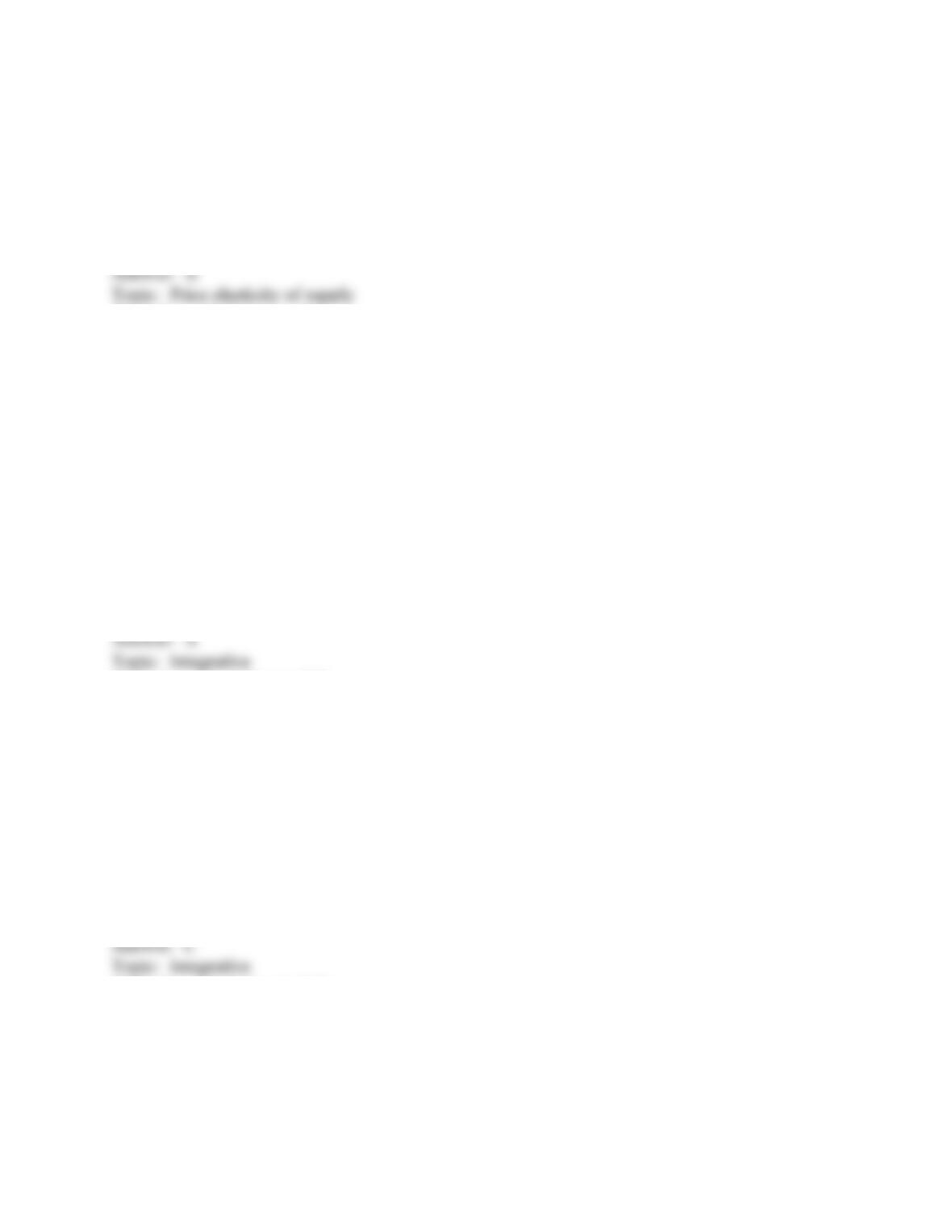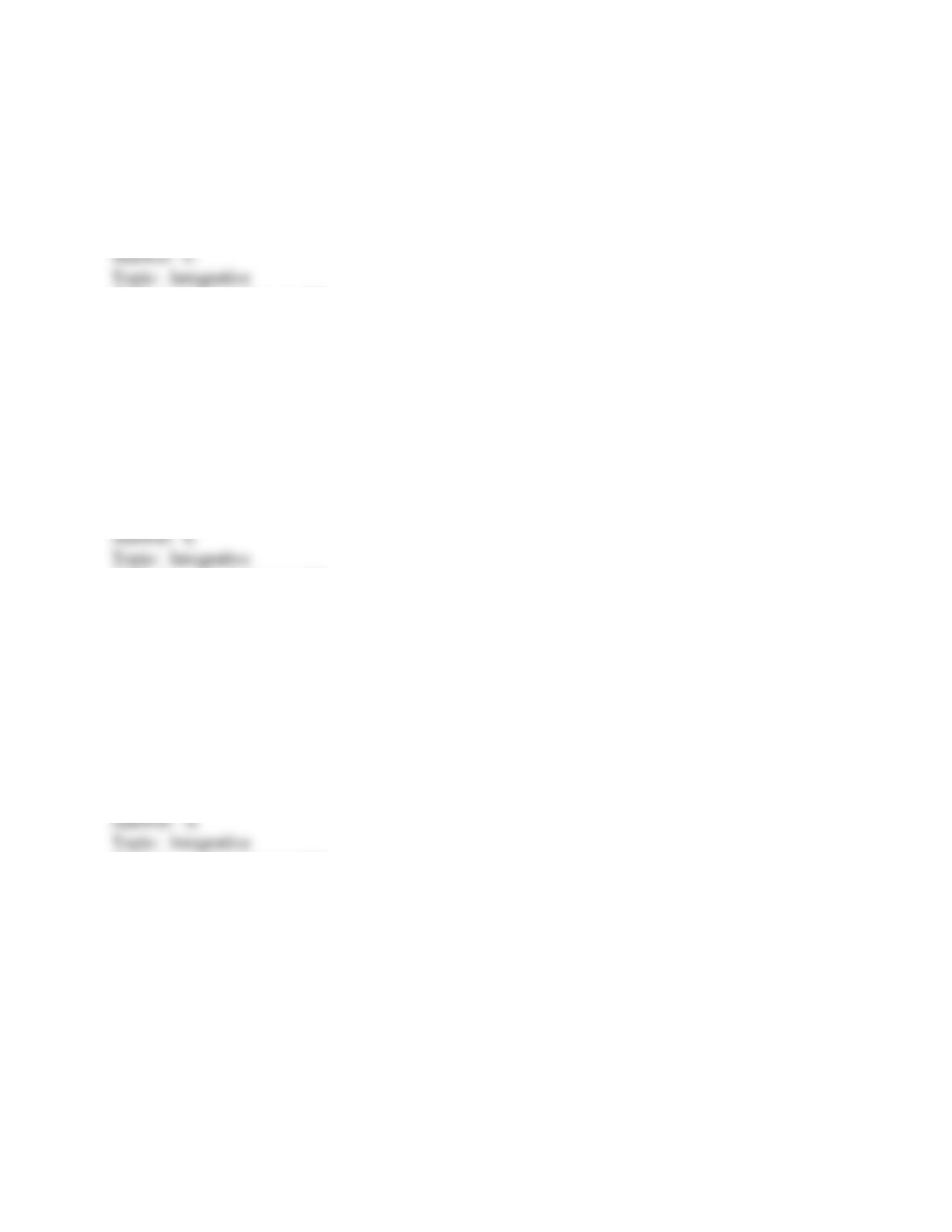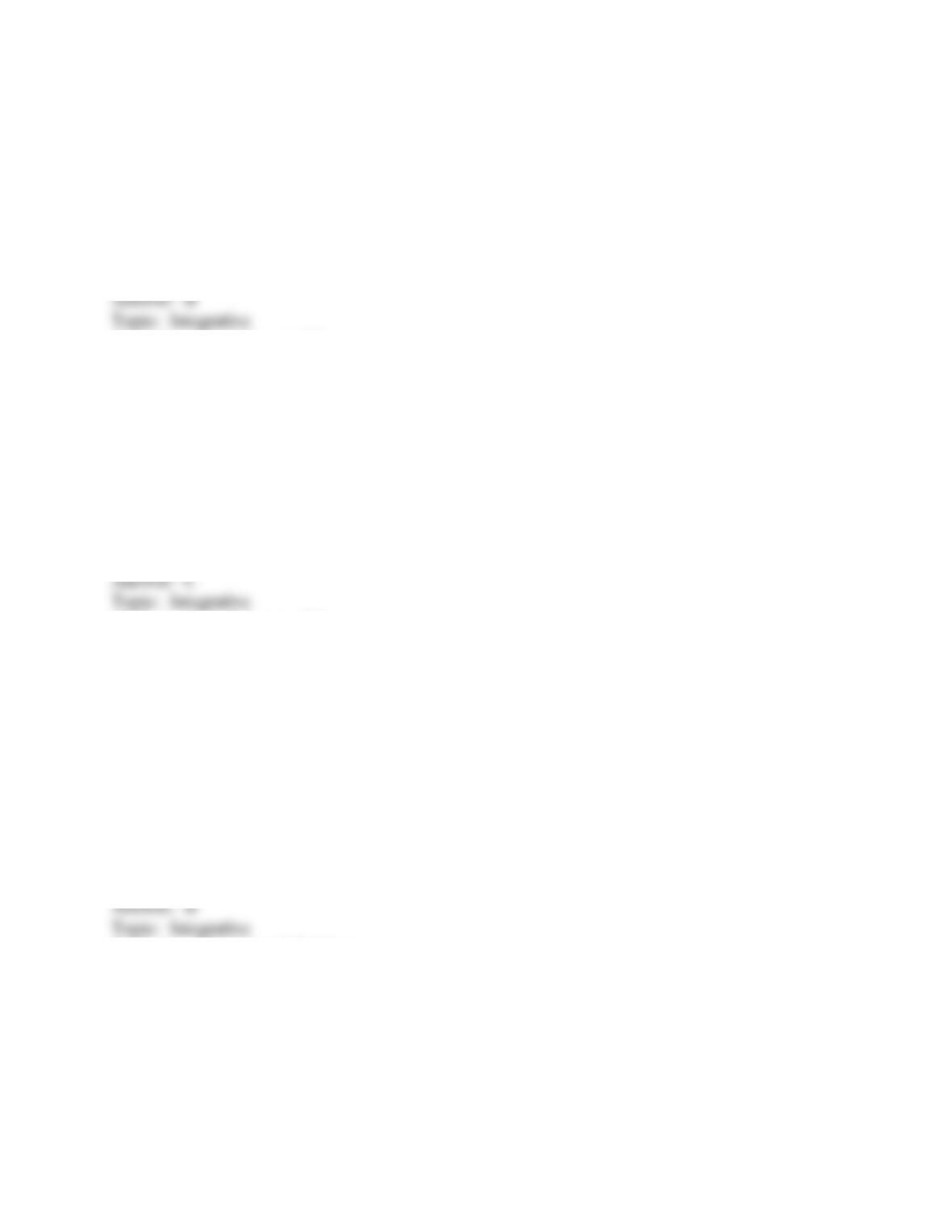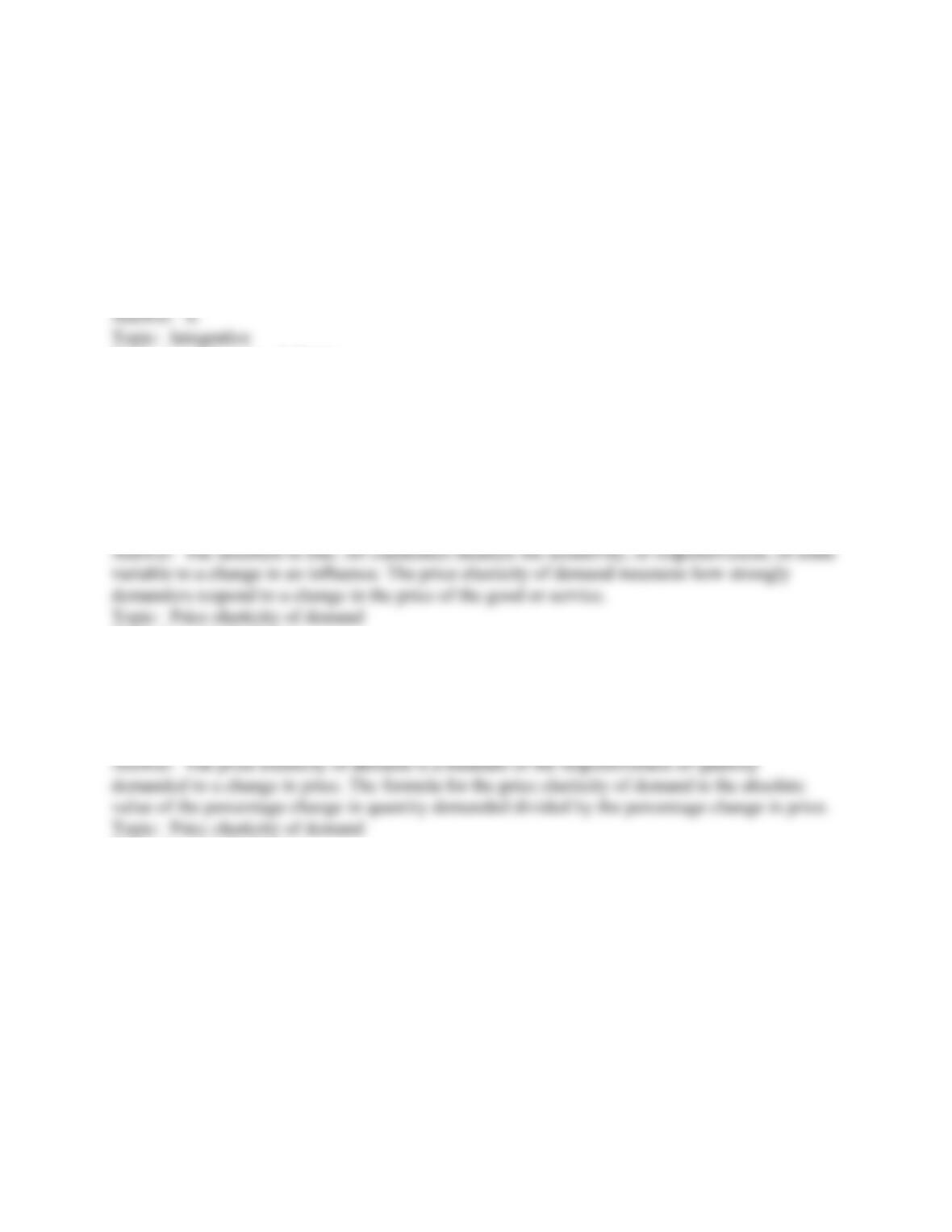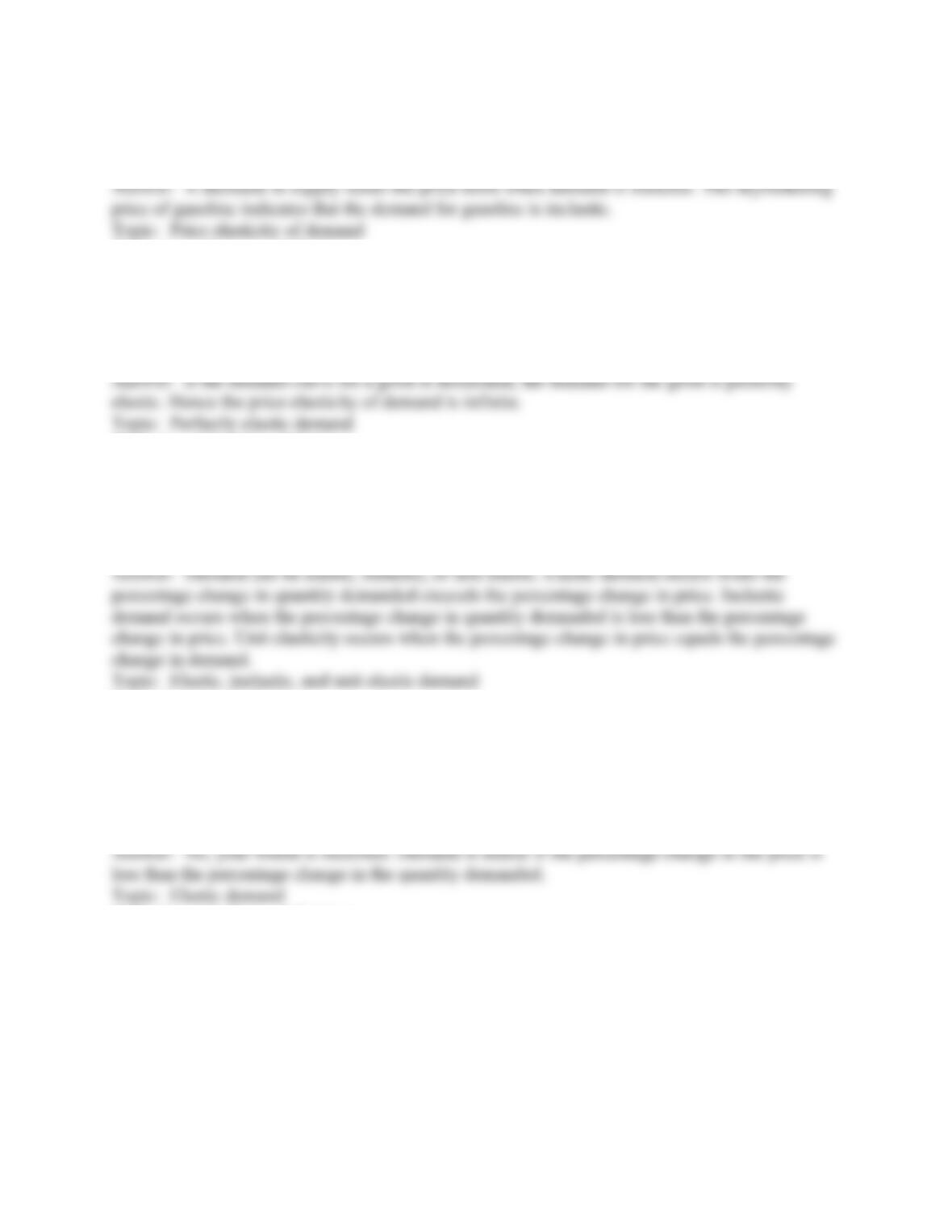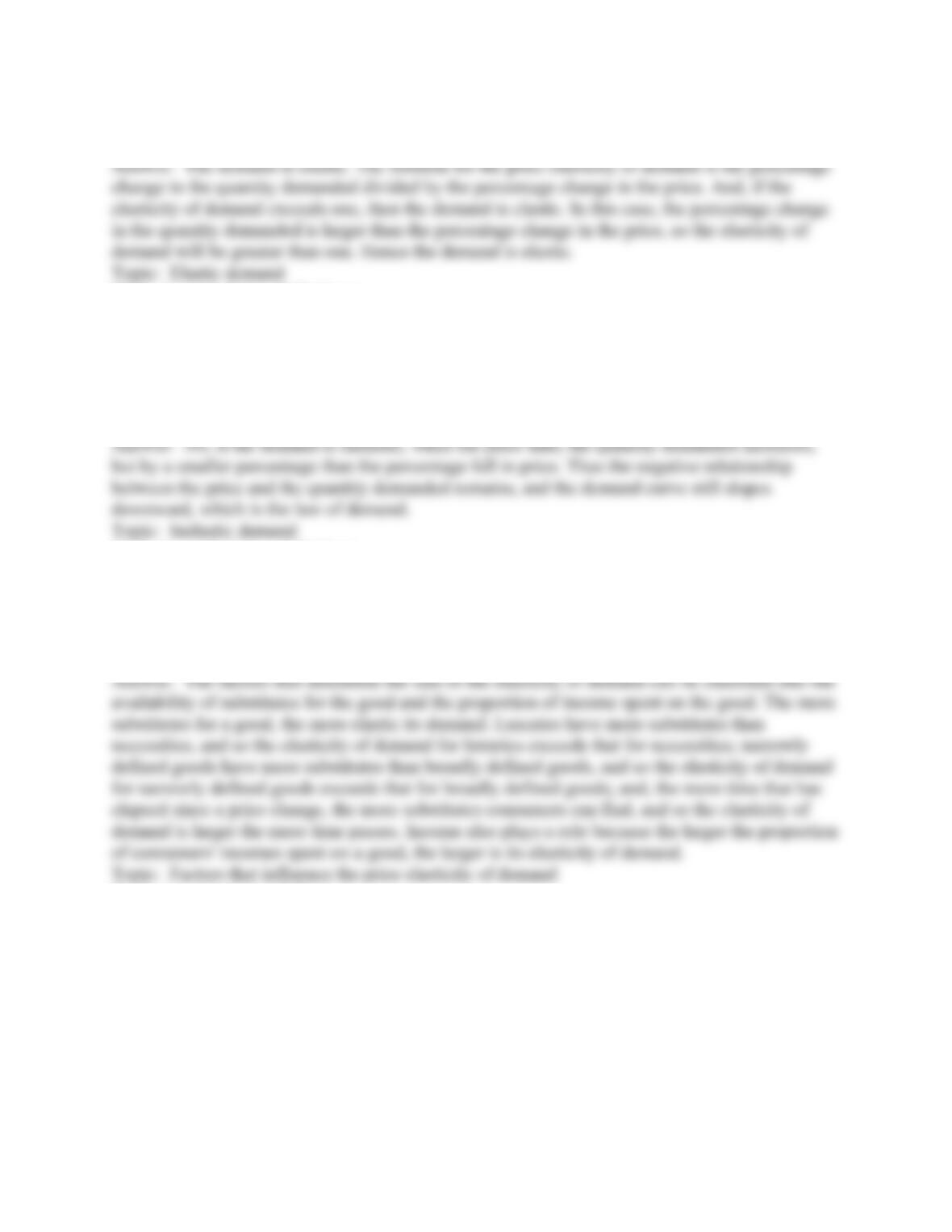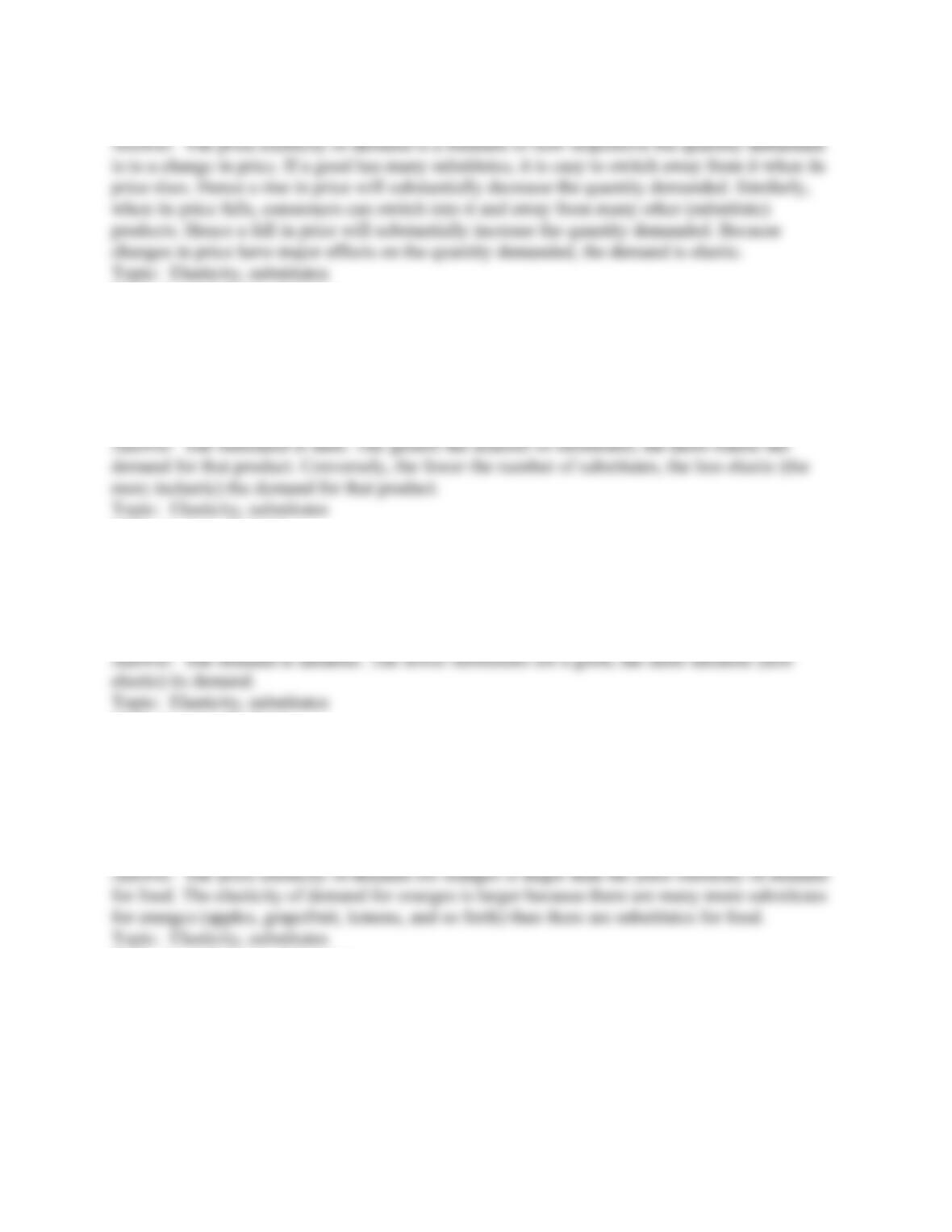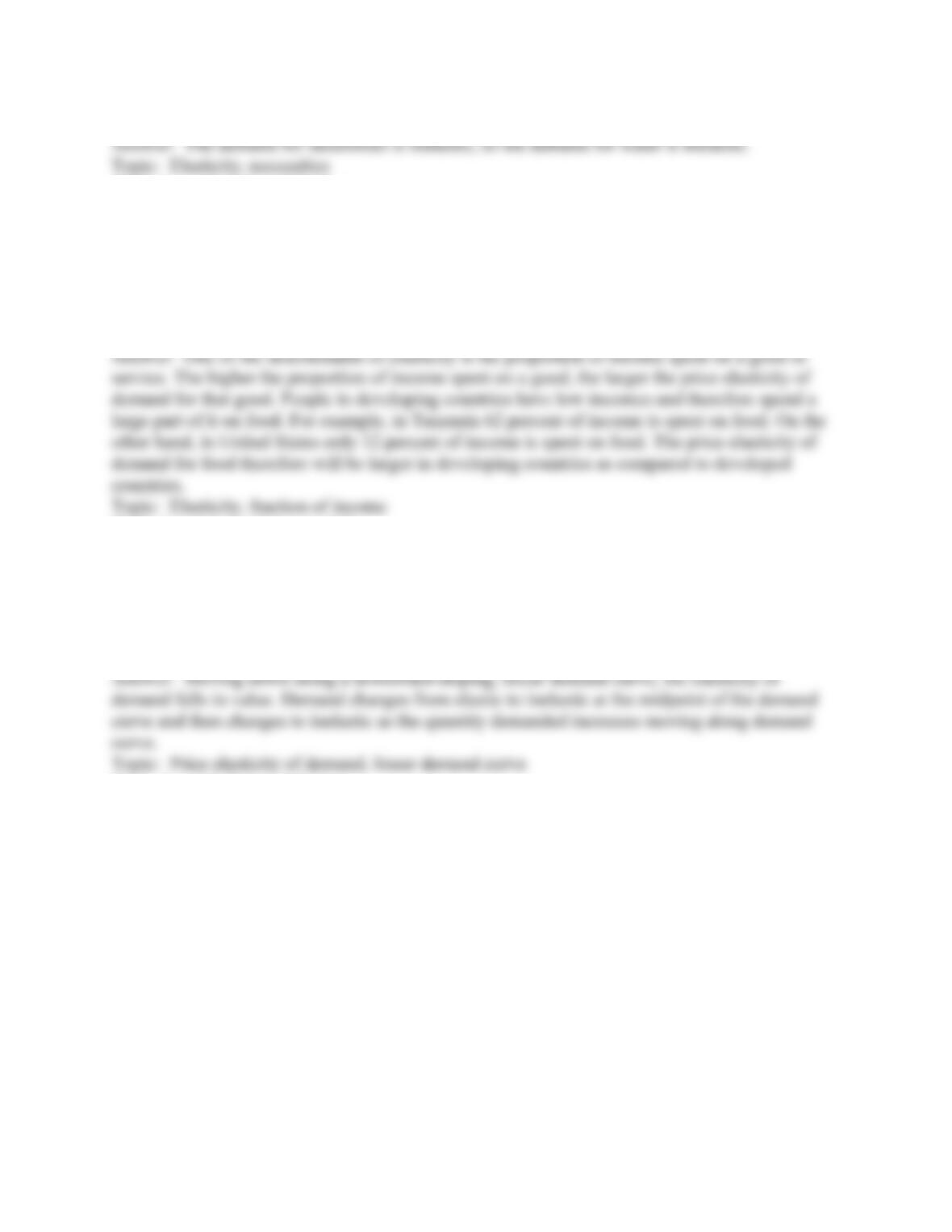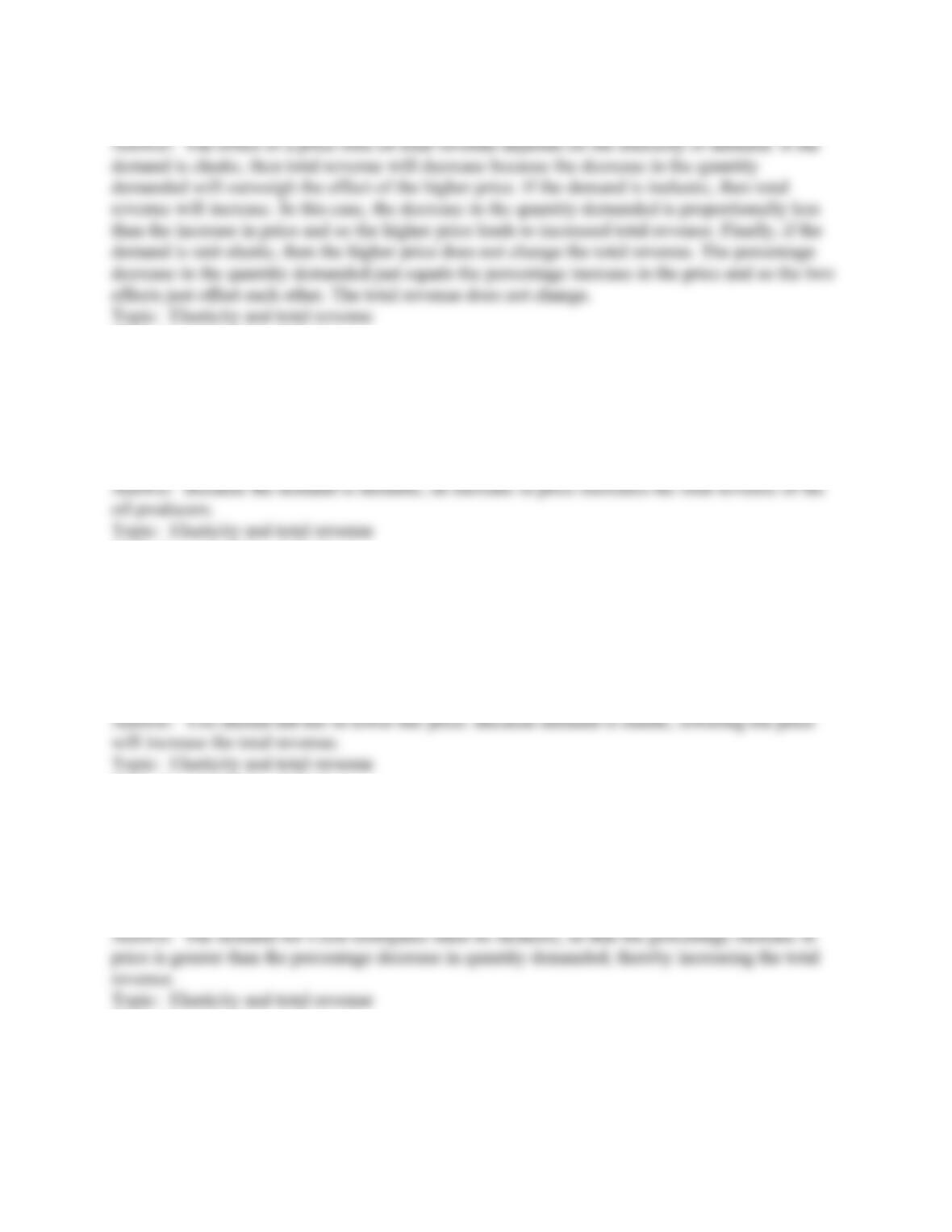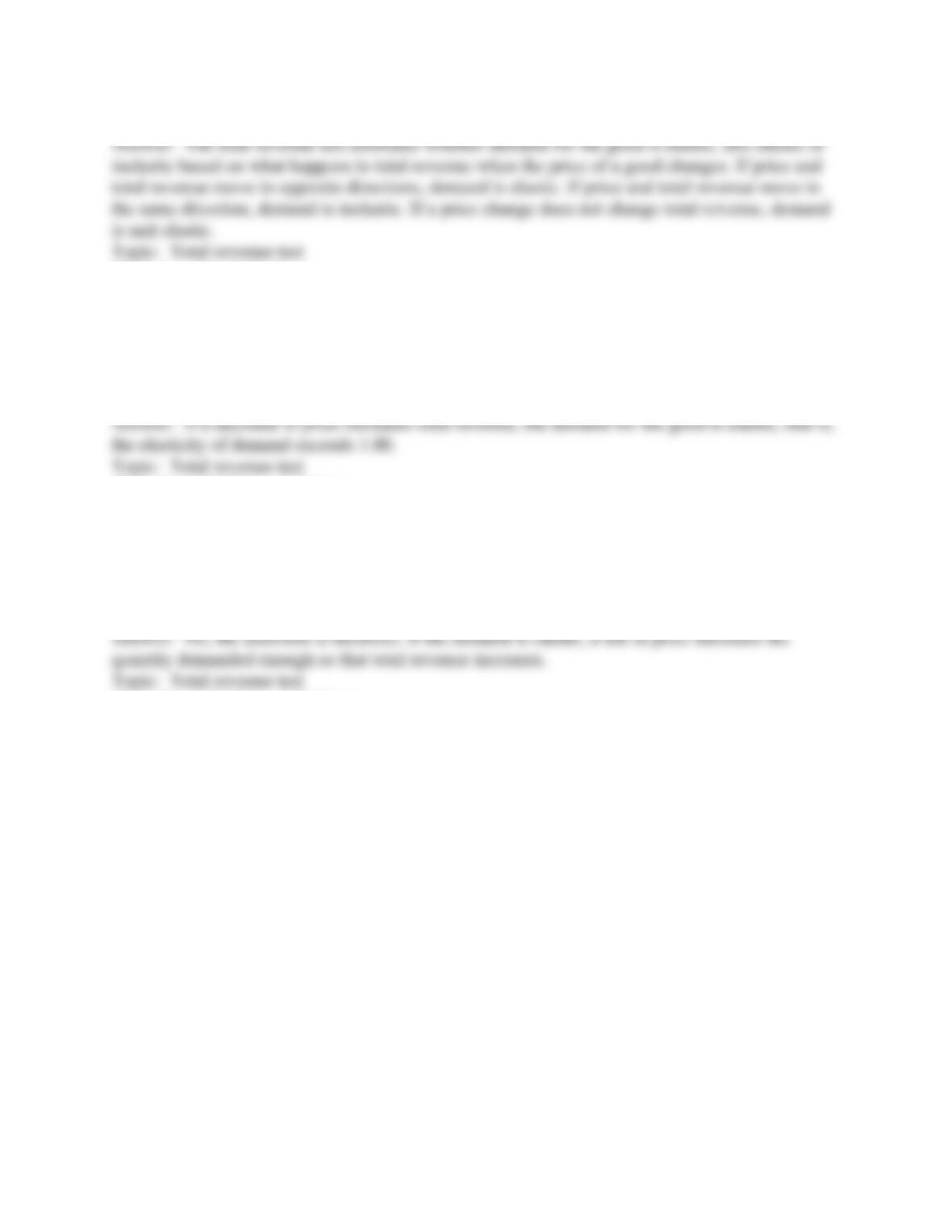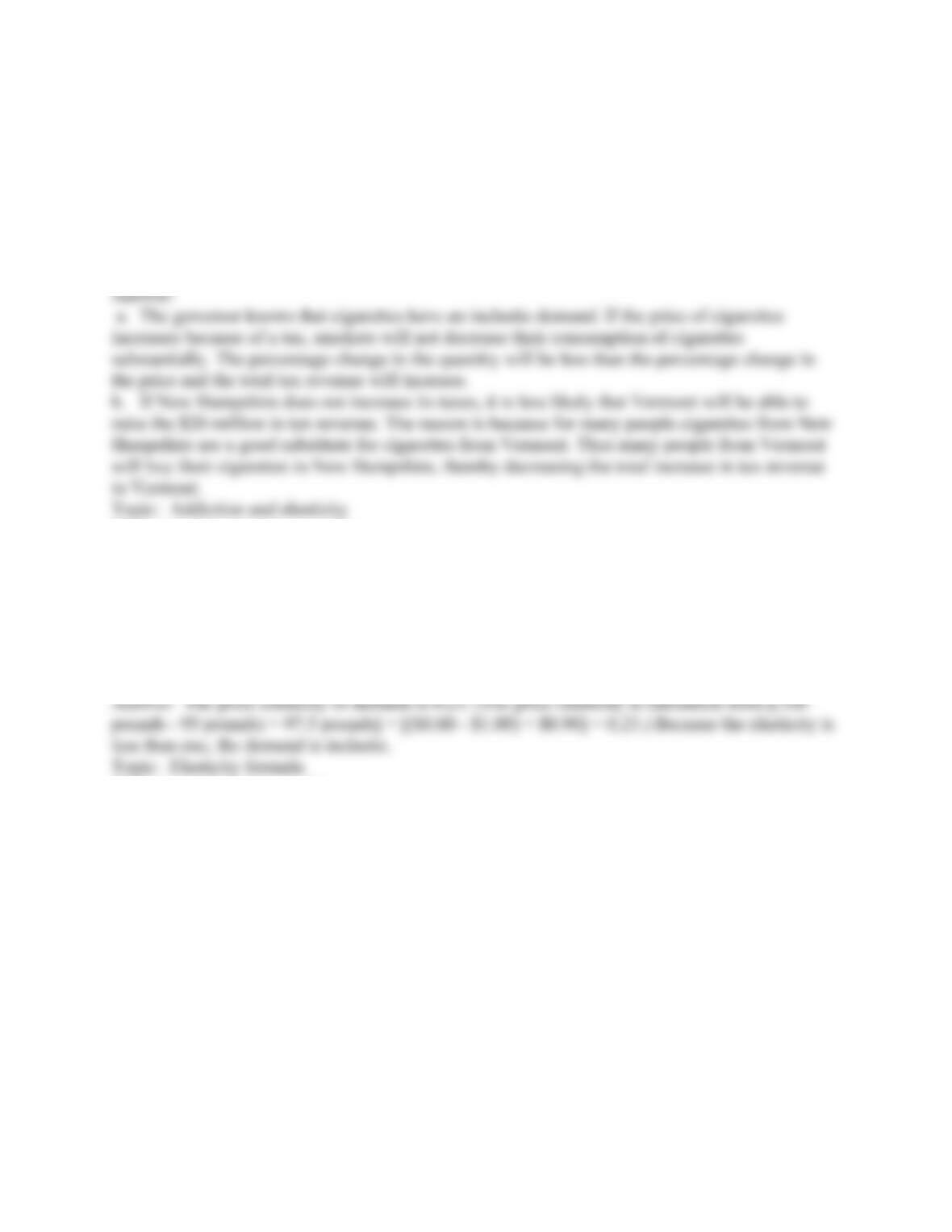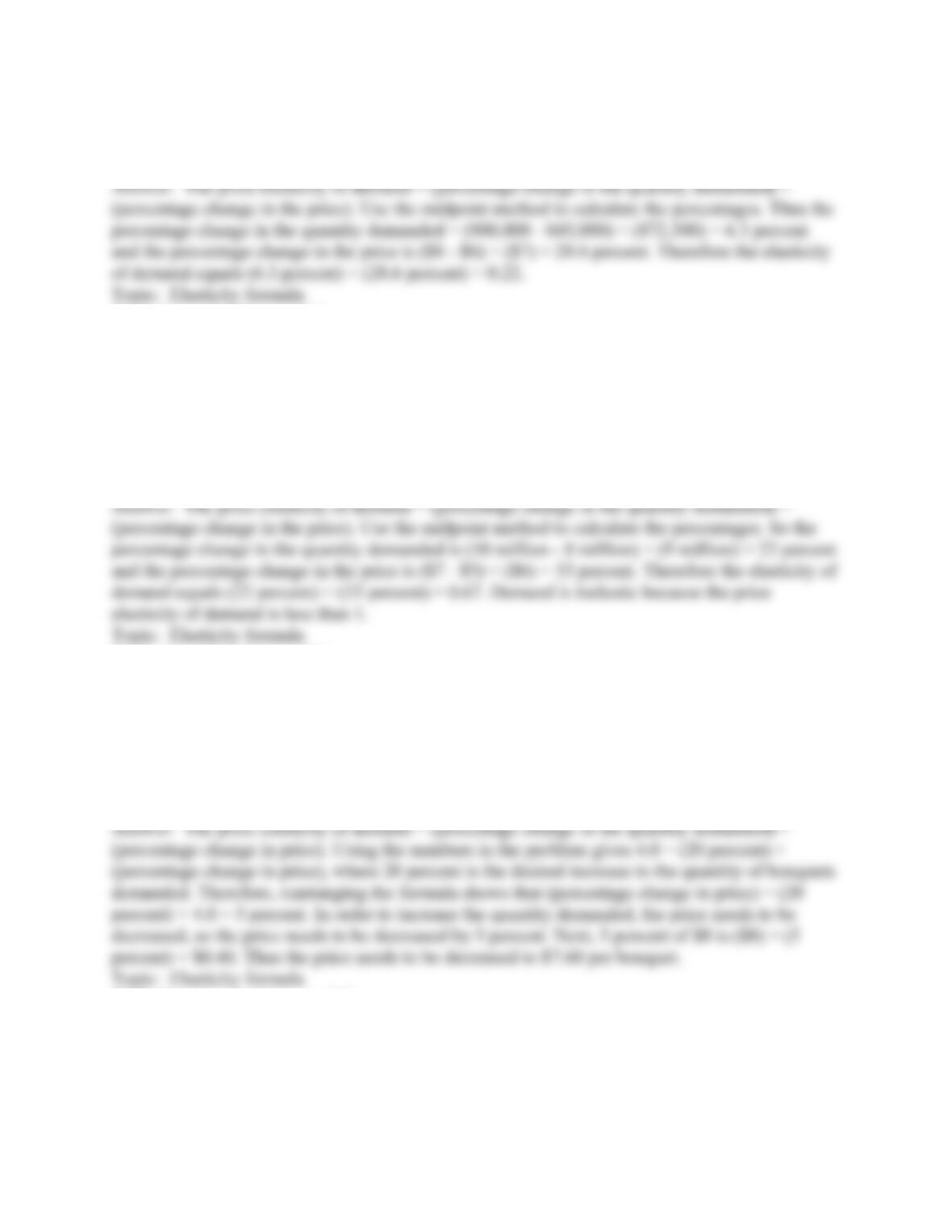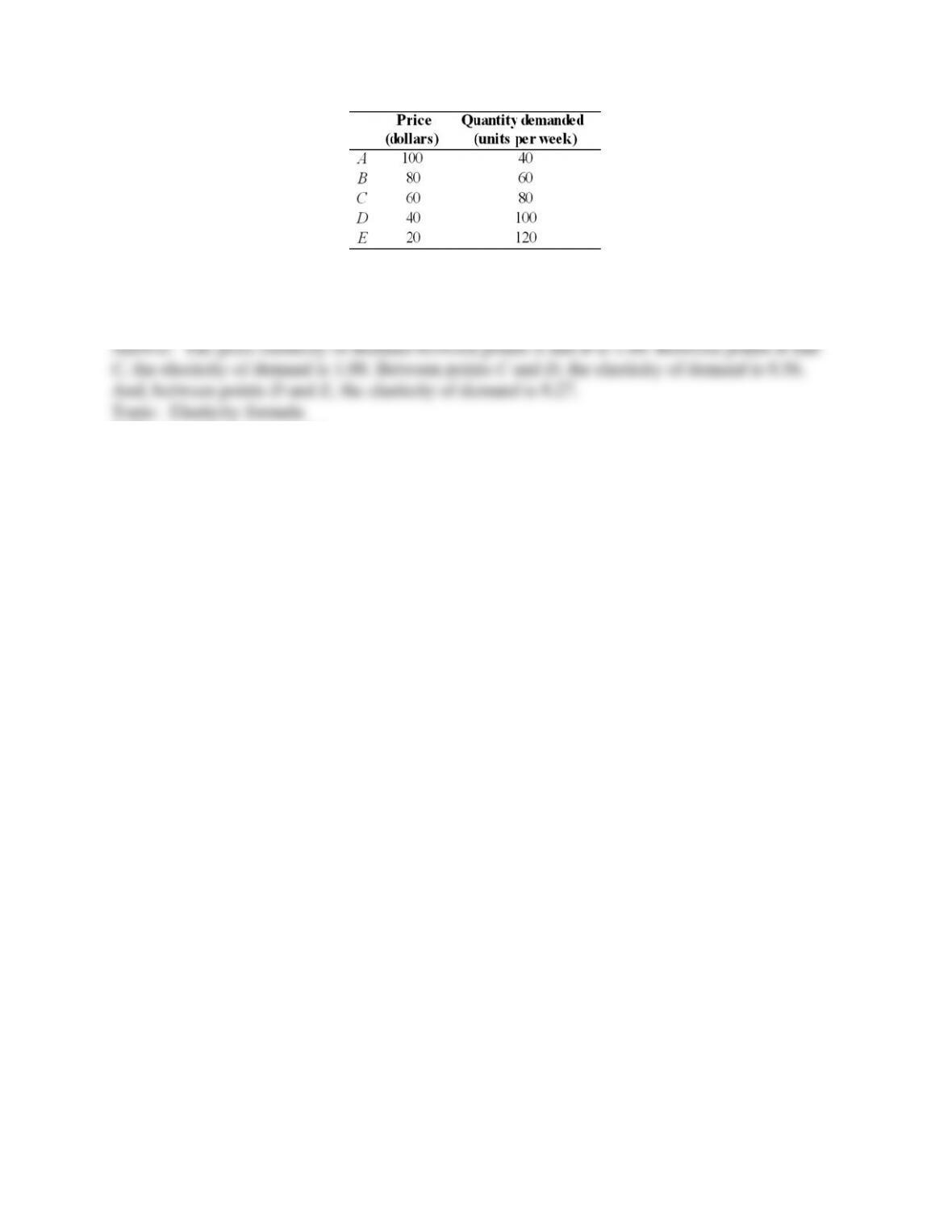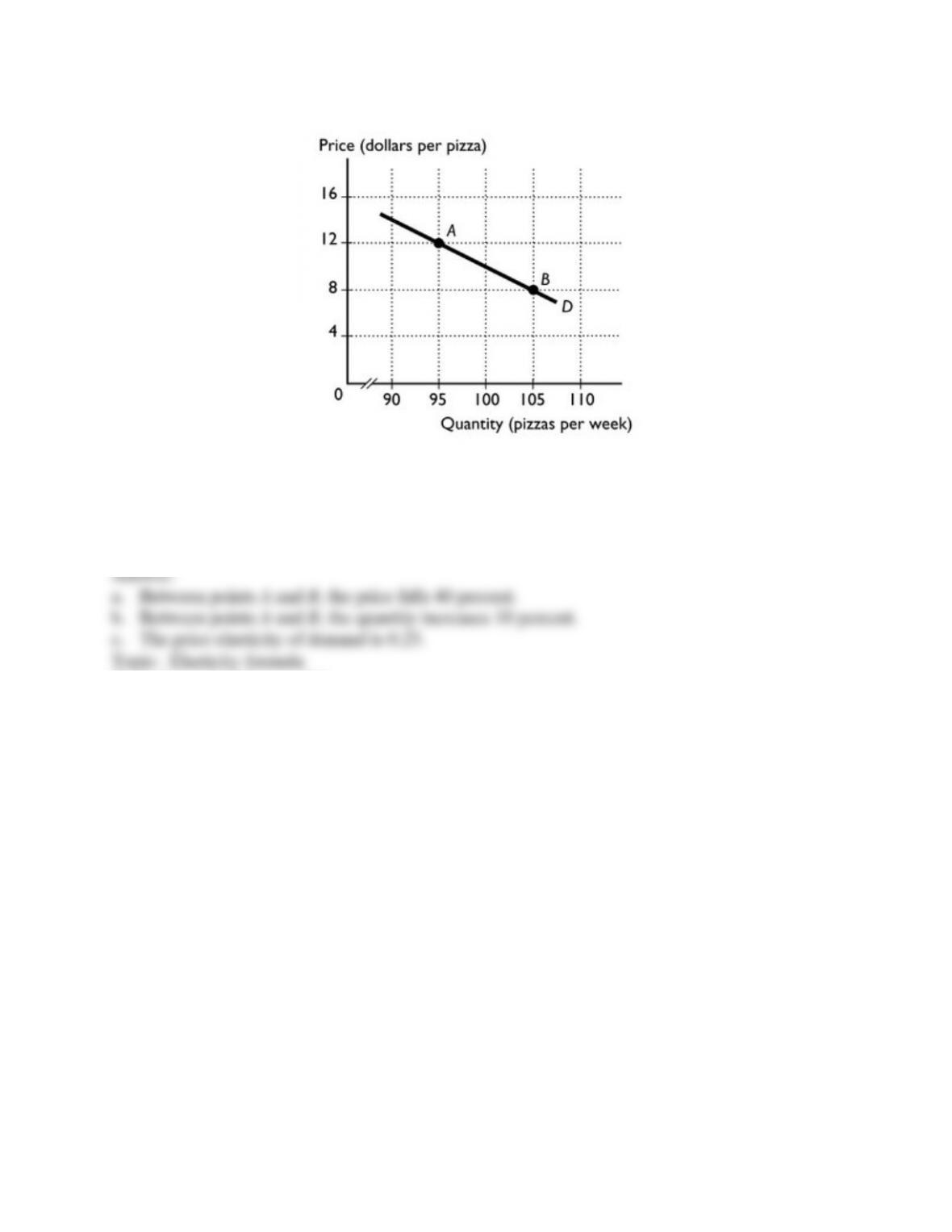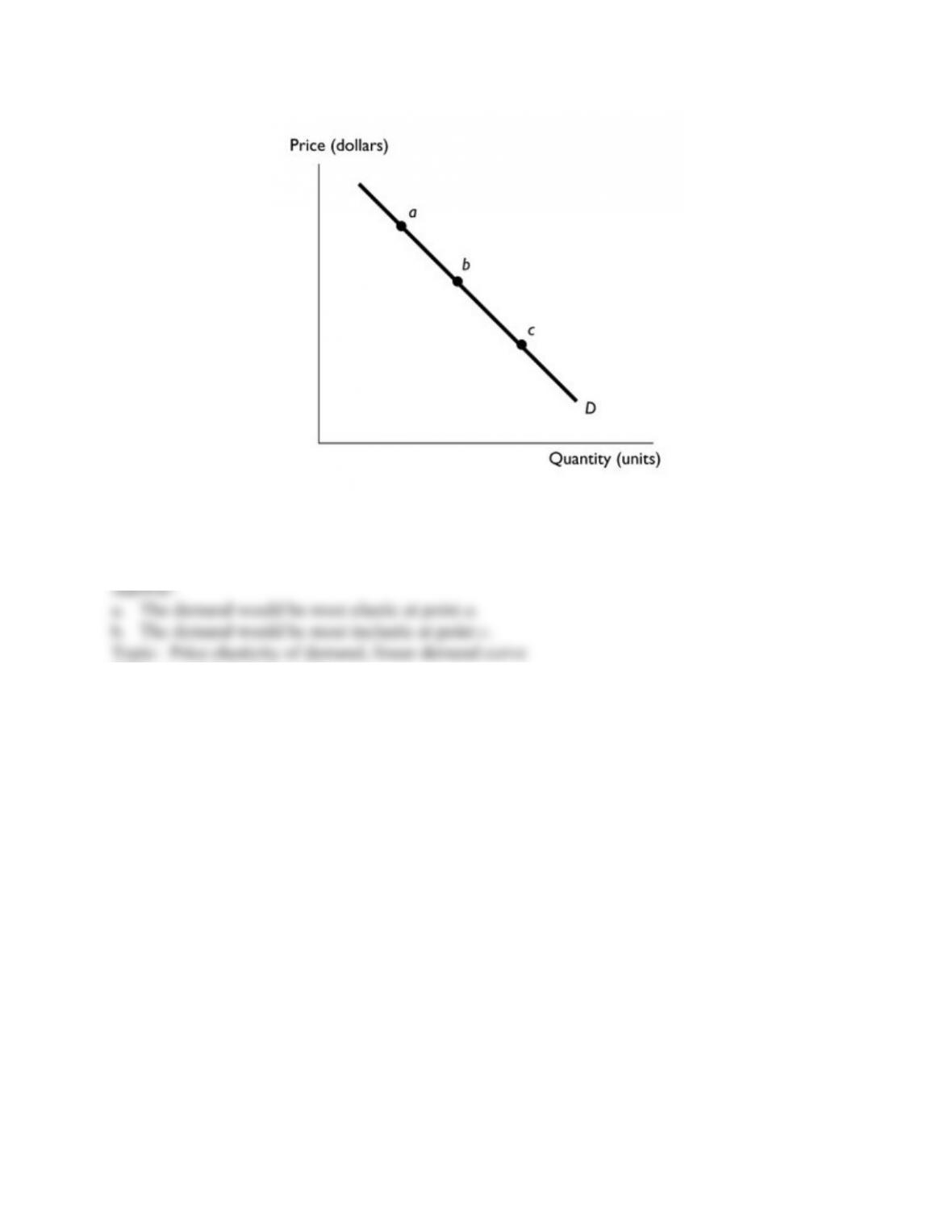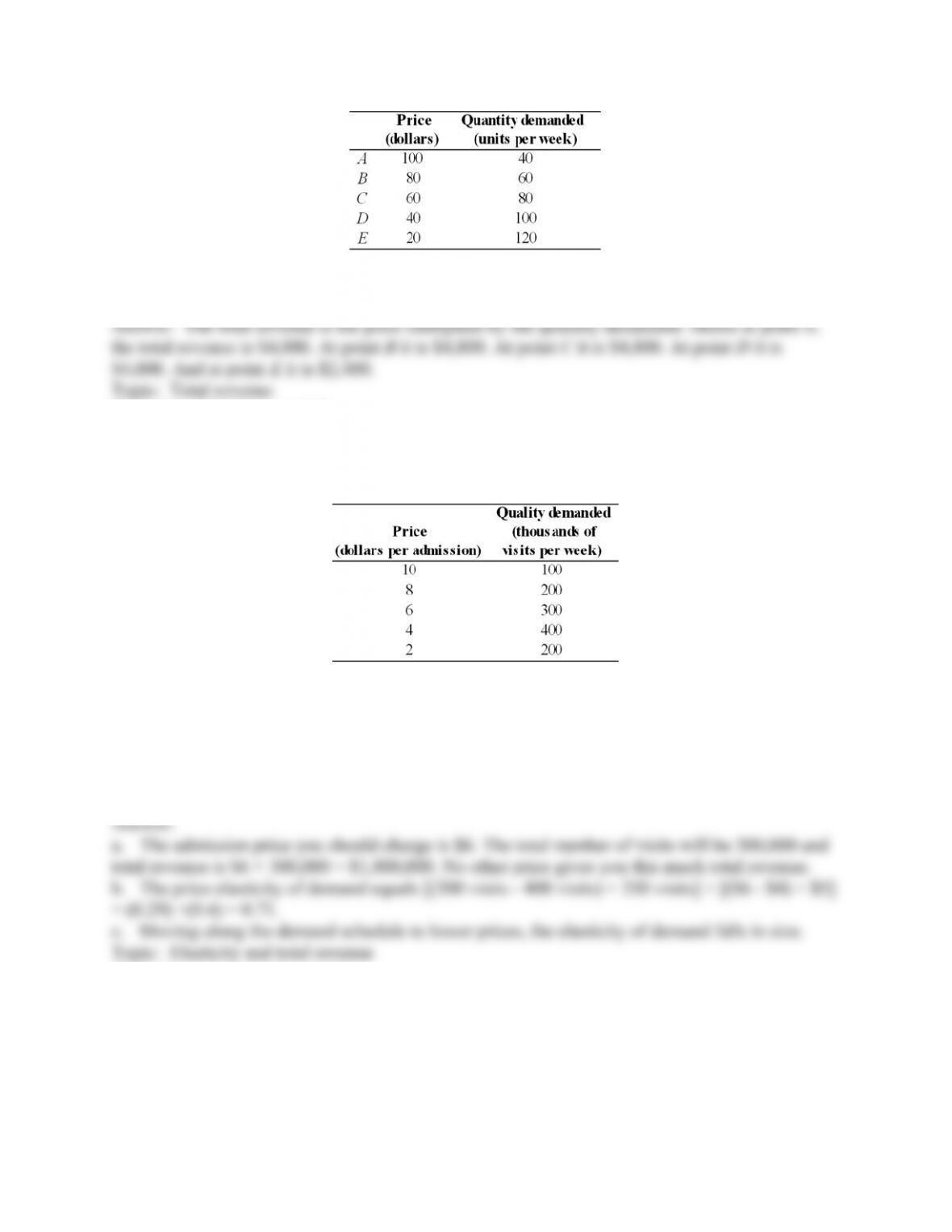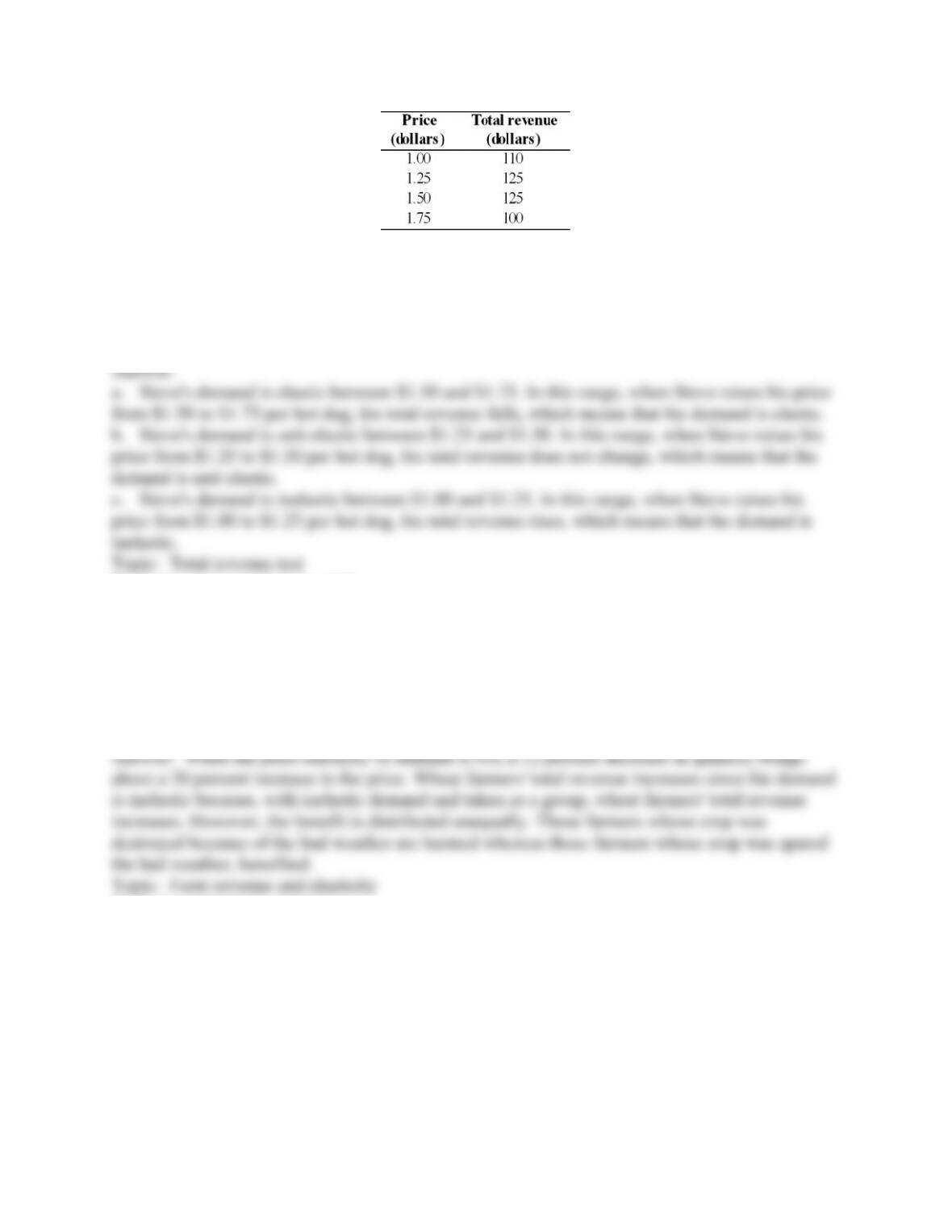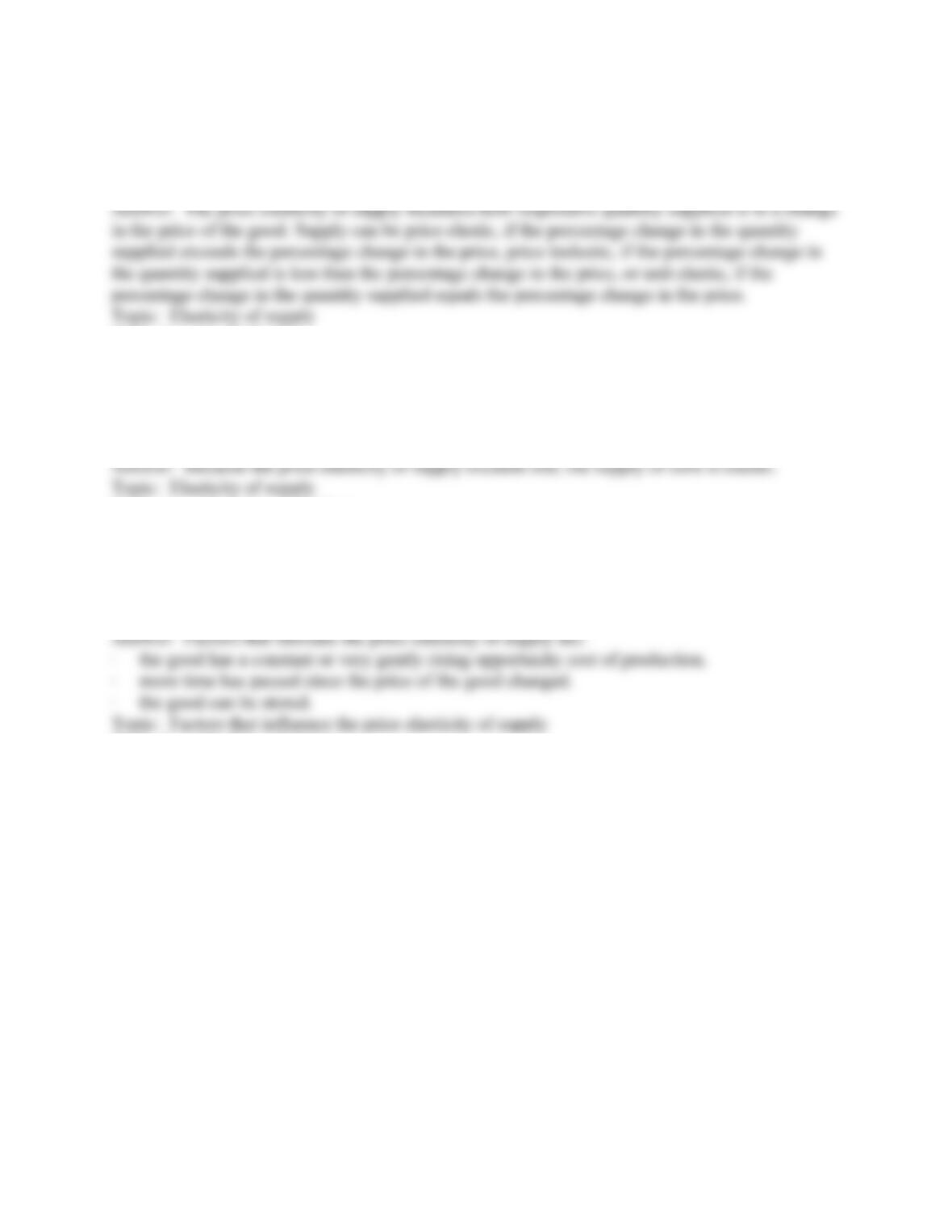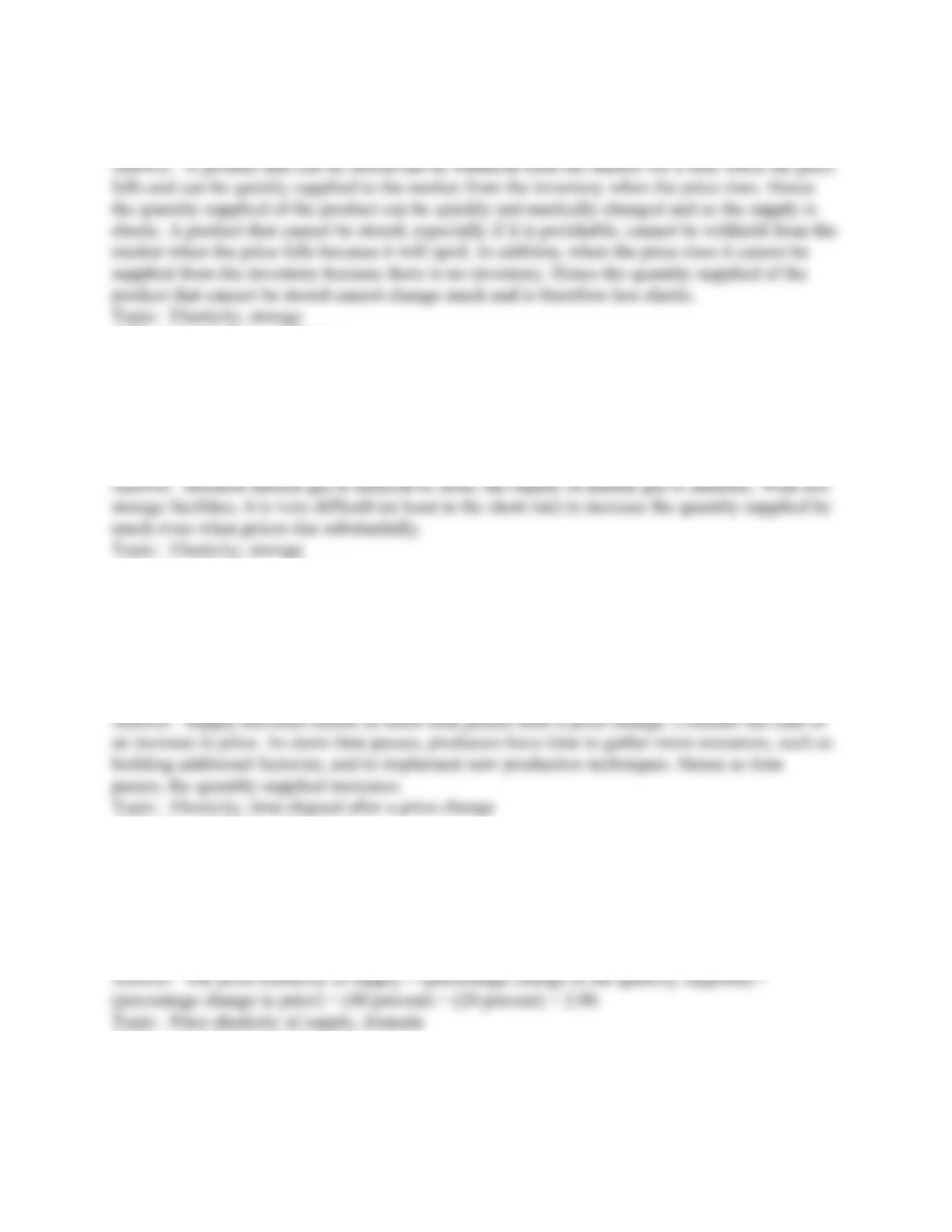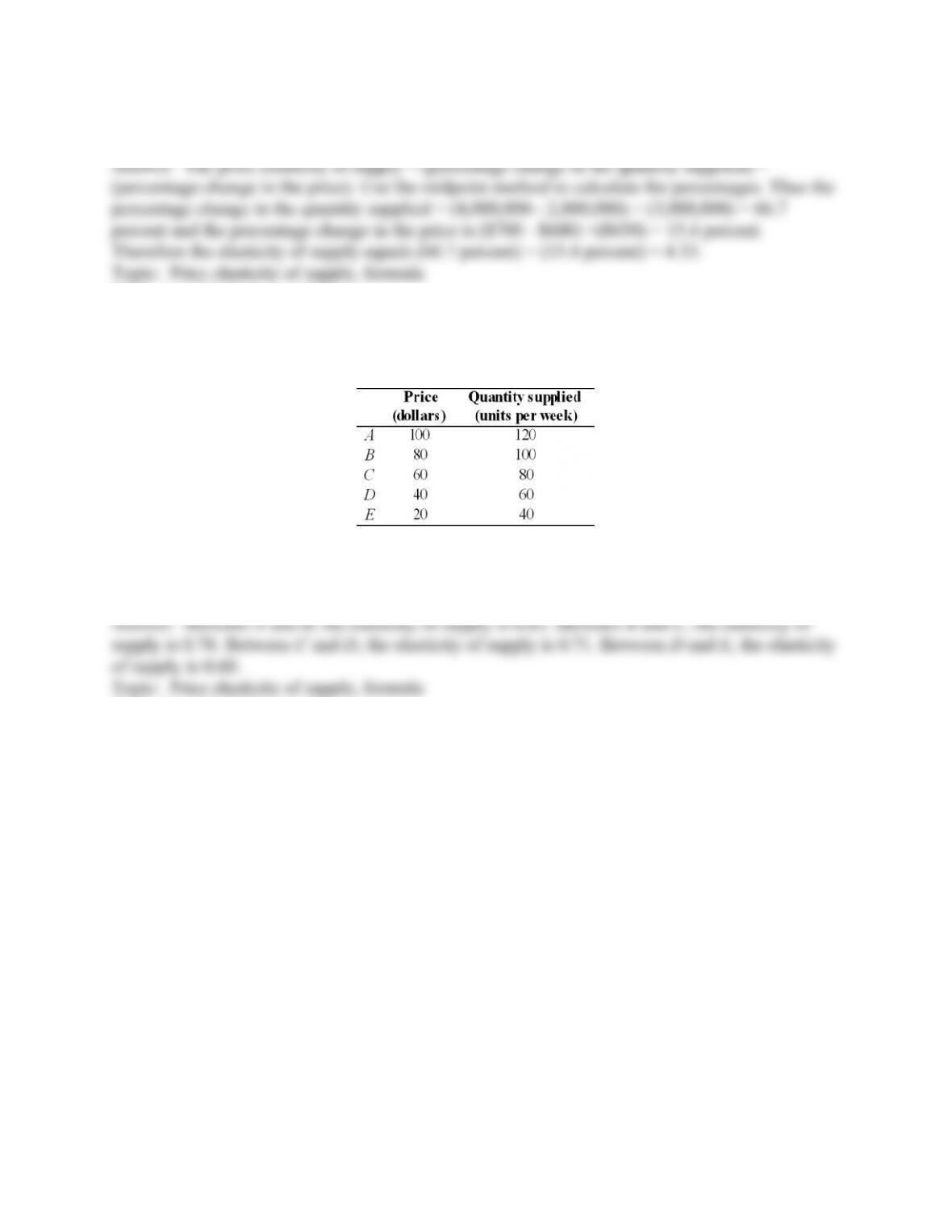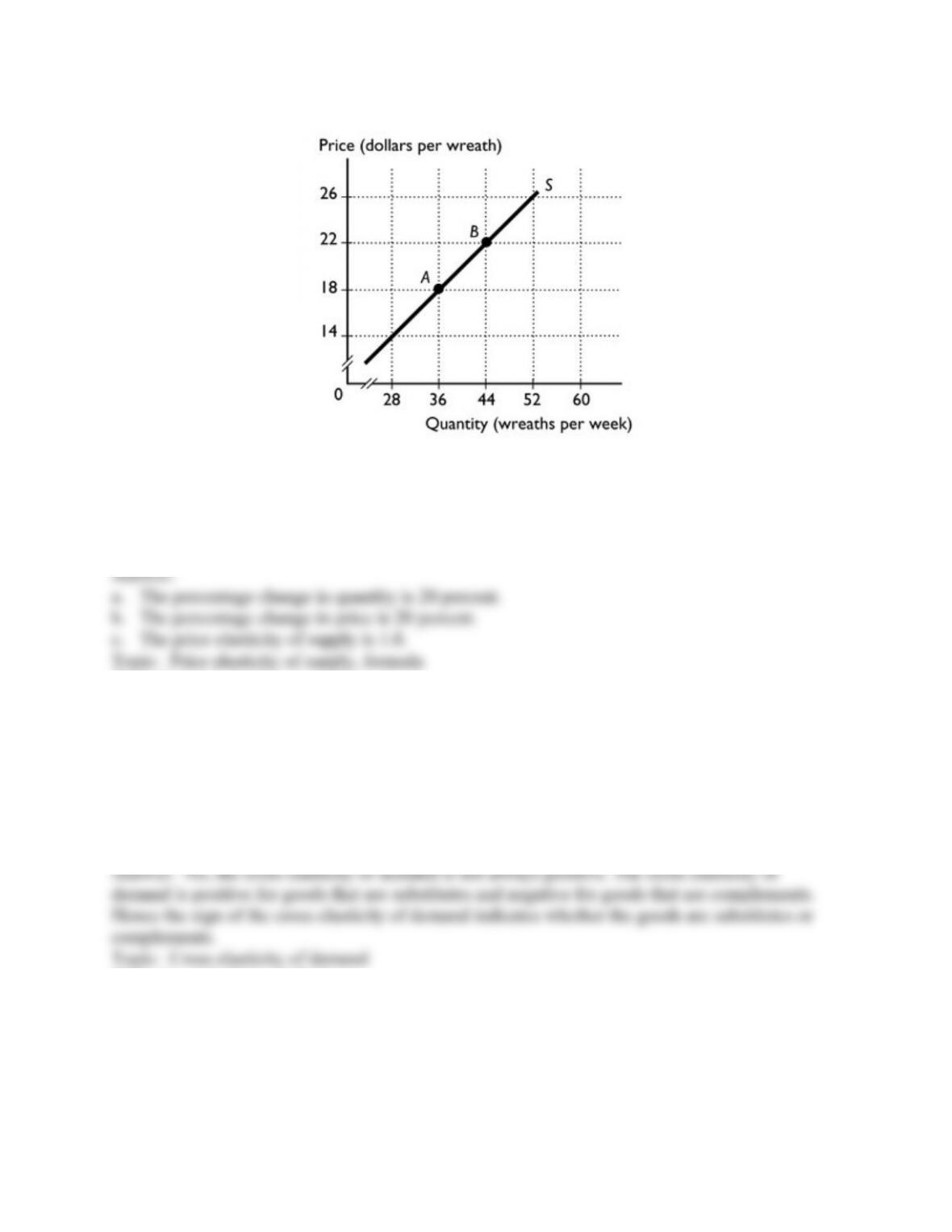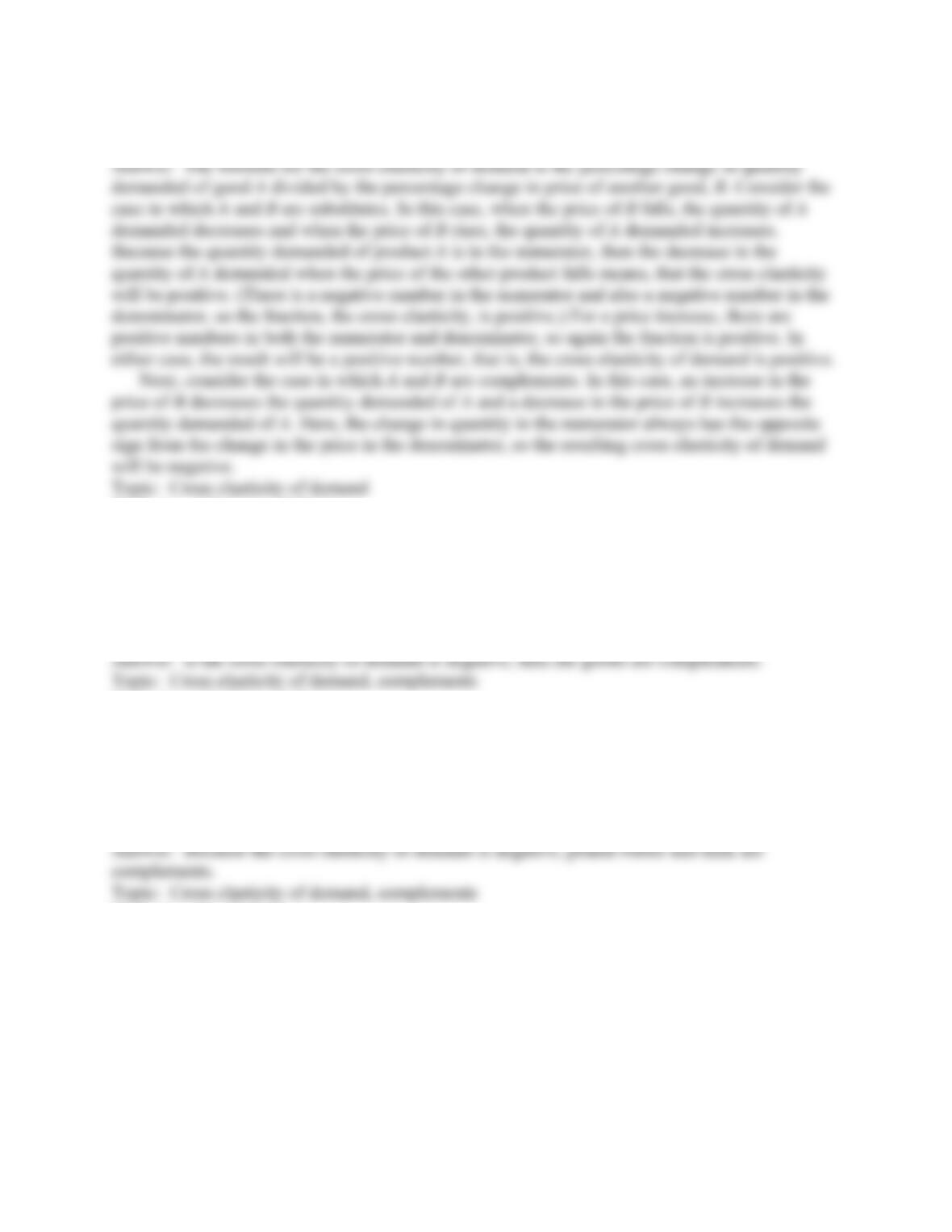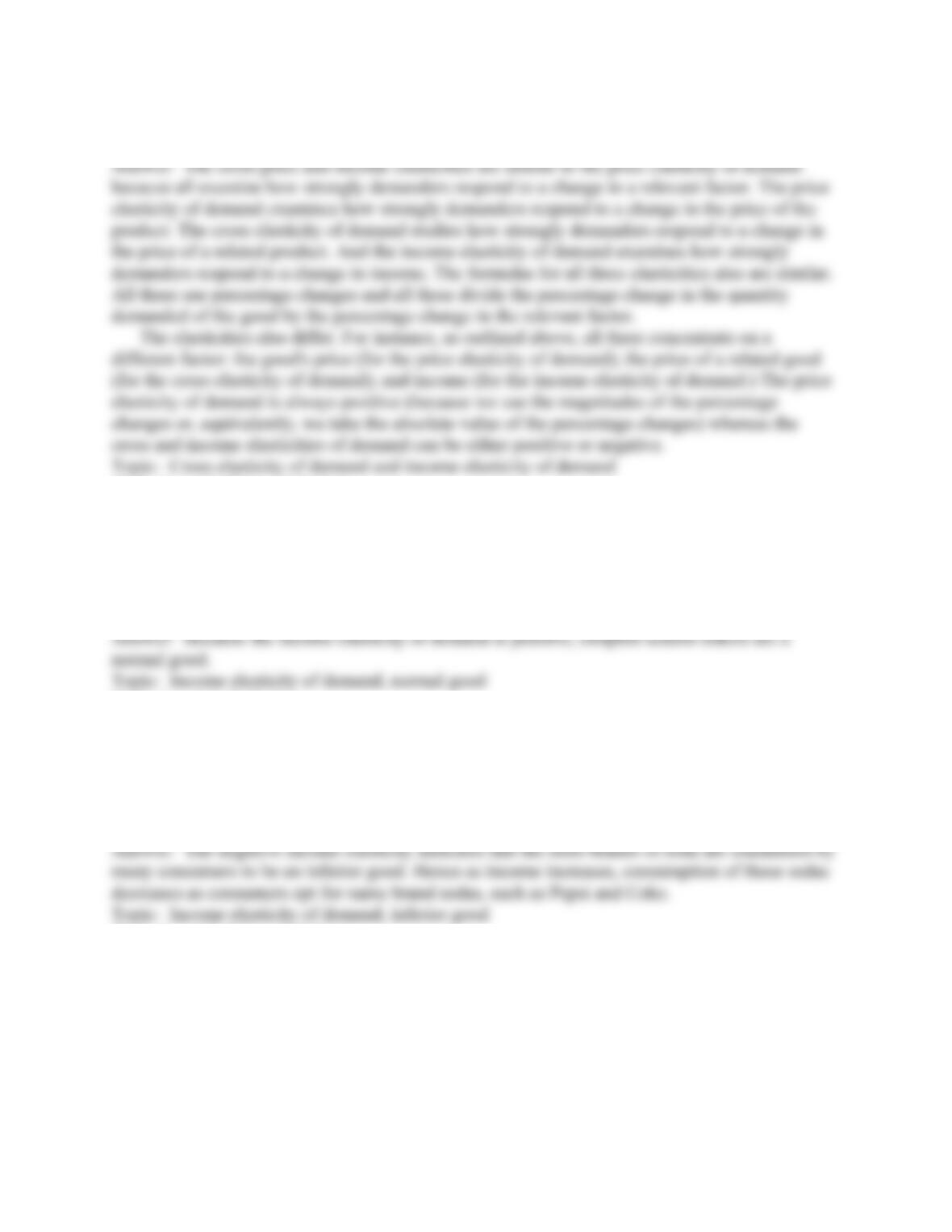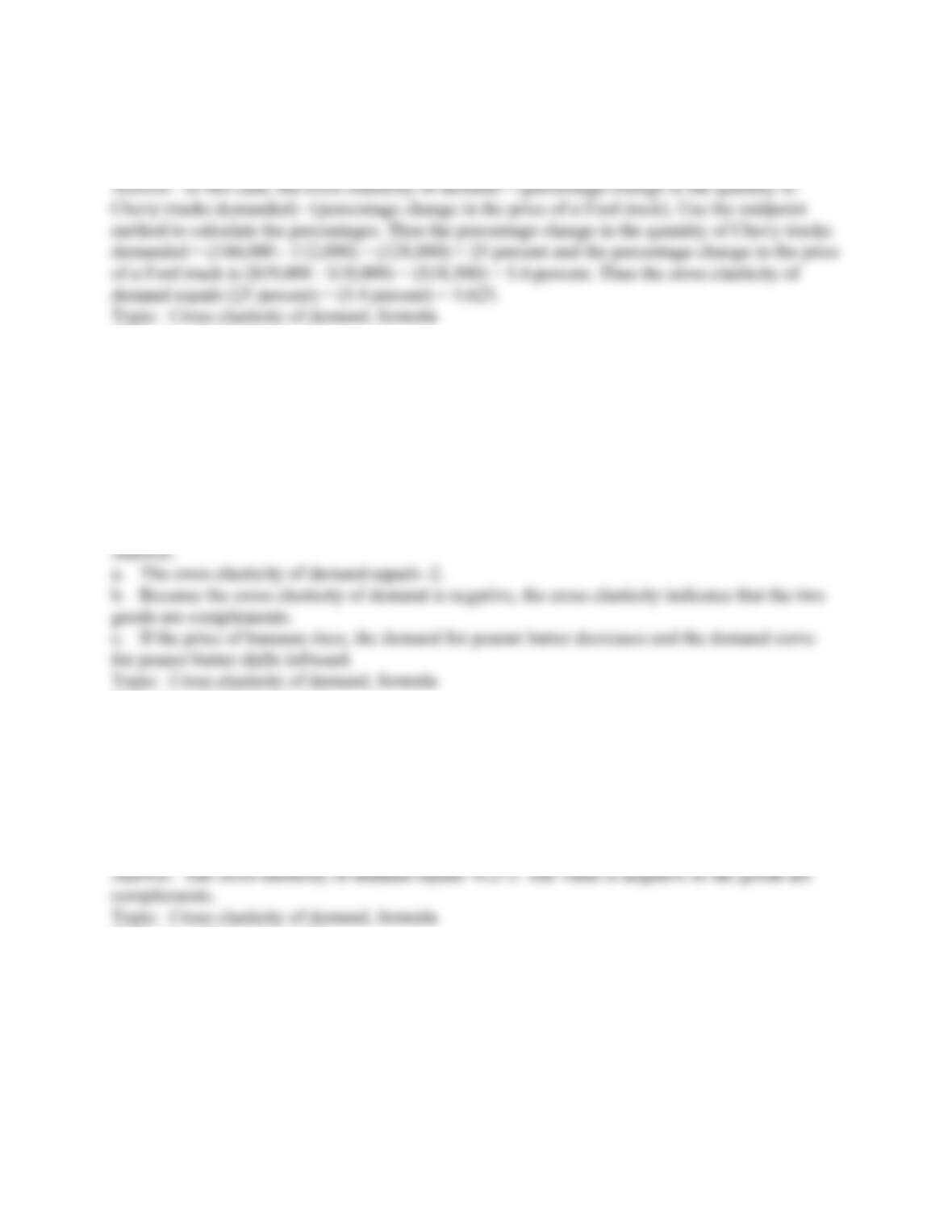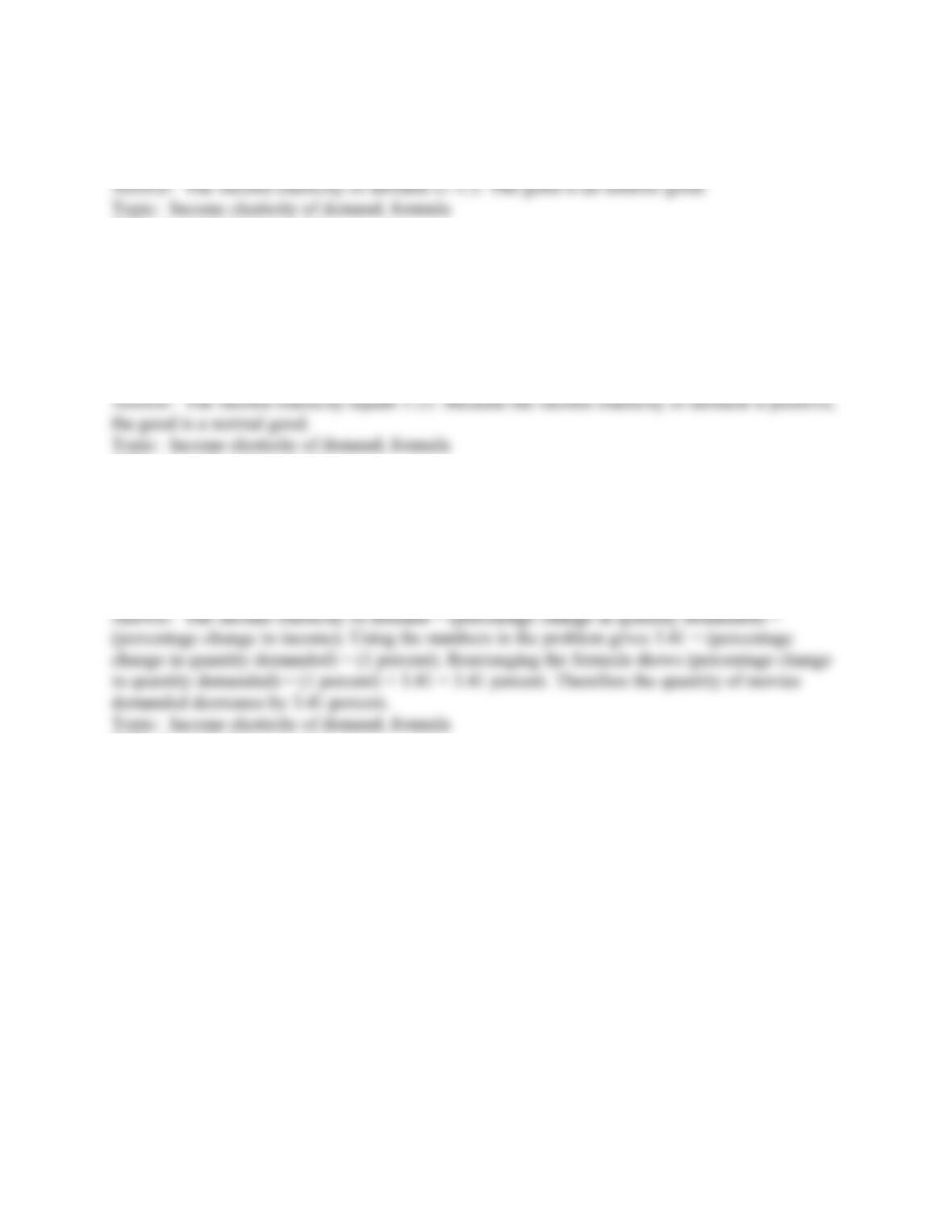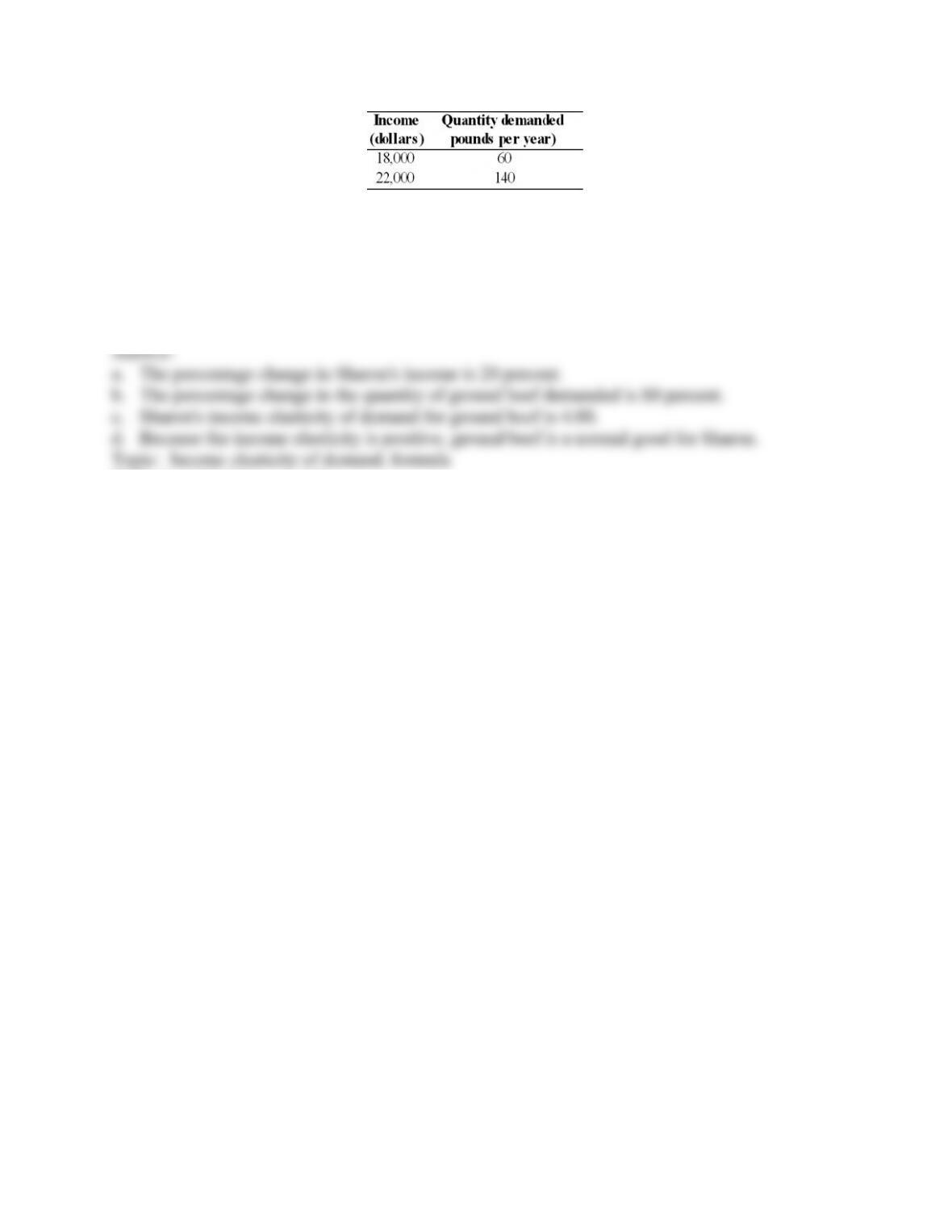45
Copyright © 2011 Pearson Education, Inc.
128) When a firm raises the price of its product, what happens to its total revenue?
A) If demand is elastic, total revenue decreases.
B) If demand is unit elastic, total revenue increases.
C) If demand is inelastic, total revenue decreases.
D) If demand is elastic, total revenue increases.
E) If demand is unit elastic, total revenue decreases.
Skill: Level 3: Using models
Section: Checkpoint 5.1
Author: STUDY GUIDE
AACSB: Reflective thinking
5.2 The Price Elasticity of Supply
1) What is measured by the price elasticity of supply?
A) The price elasticity of supply measures how responsive producers are to changes in the price
of other goods.
B) The price elasticity of supply measures how responsive producers are to changes in income.
C) The price elasticity of supply measures how responsive producers are to changes in the price
of a product.
D) The price elasticity of supply is a measure of the slope of the supply curve.
E) The price elasticity of supply measures how responsive producers are to changes in the cost of
producing a product.
Skill: Level 1: Definition
Section: Checkpoint 5.2
Author: PH
AACSB: Reflective thinking
2) The price elasticity of supply measures the
A) percentage change in supply from a percentage change in demand.
B) extent to which the quantity supplied of a good changes when the price of a good changes,
other things remaining the same.
C) the slope of the supply curve.
D) how the equilibrium price changes in response to a change in the equilibrium quantity
supplied.
E) Both answers B and C are correct.
Skill: Level 1: Definition
Section: Checkpoint 5.2
Author: SA
AACSB: Reflective thinking

























































































